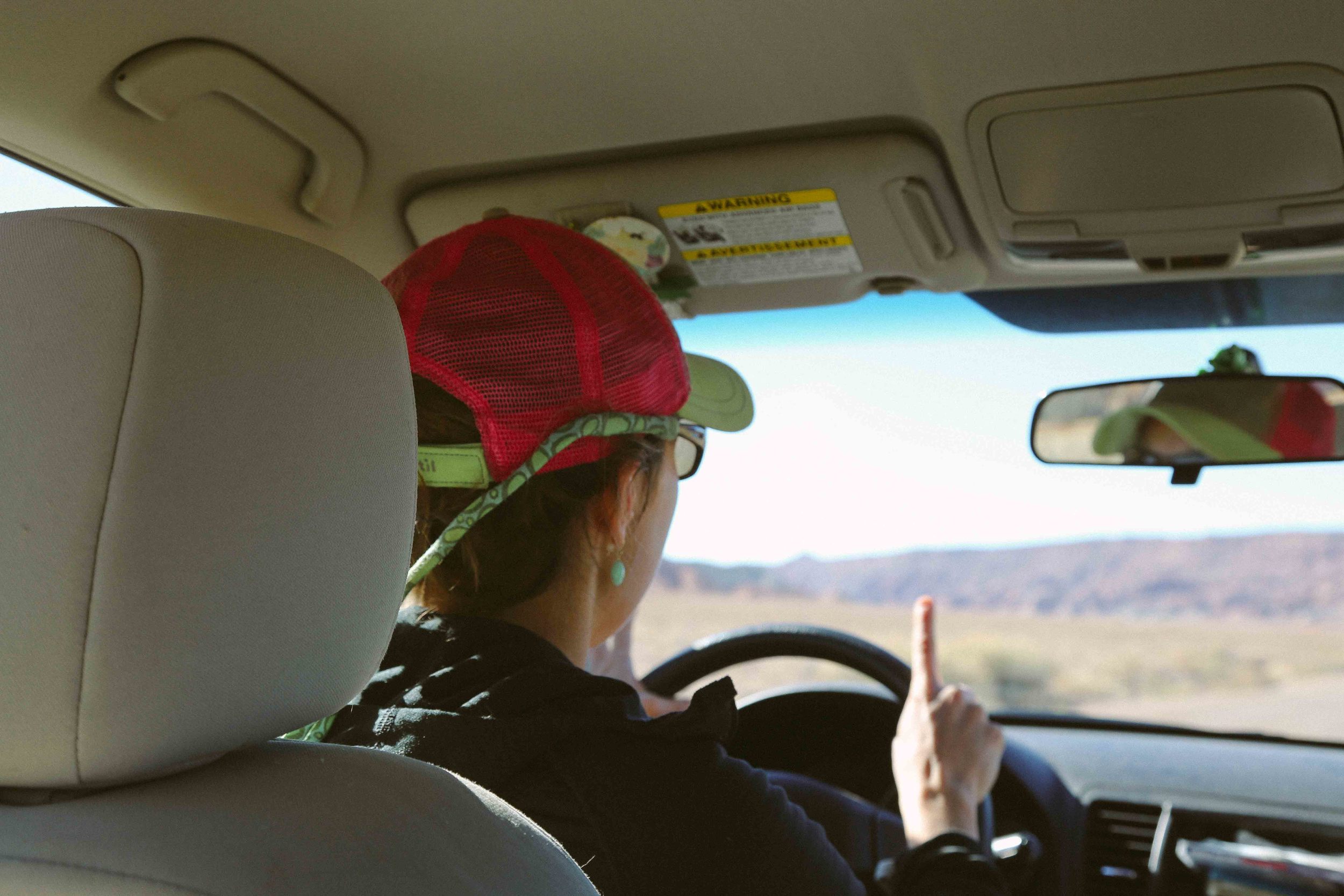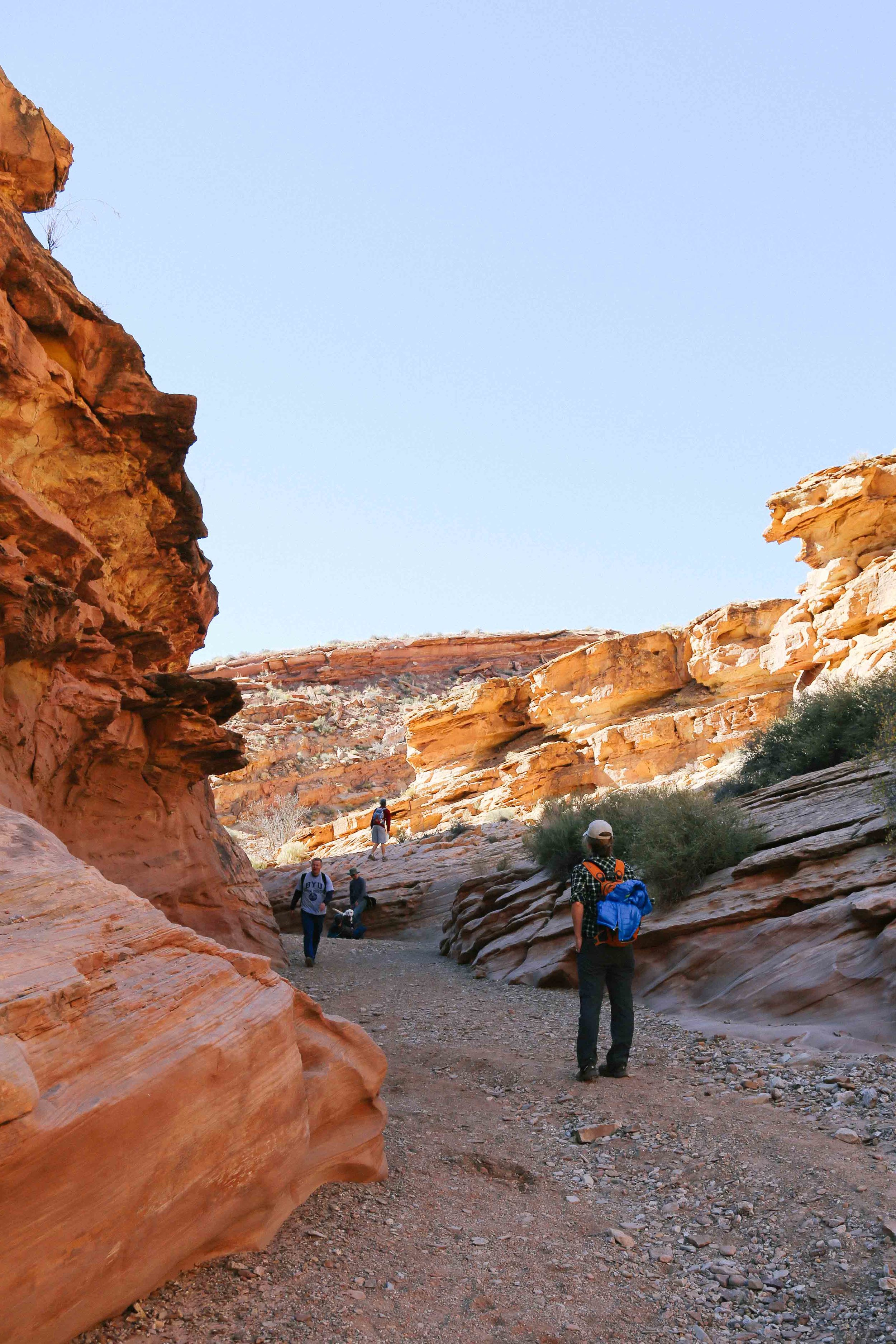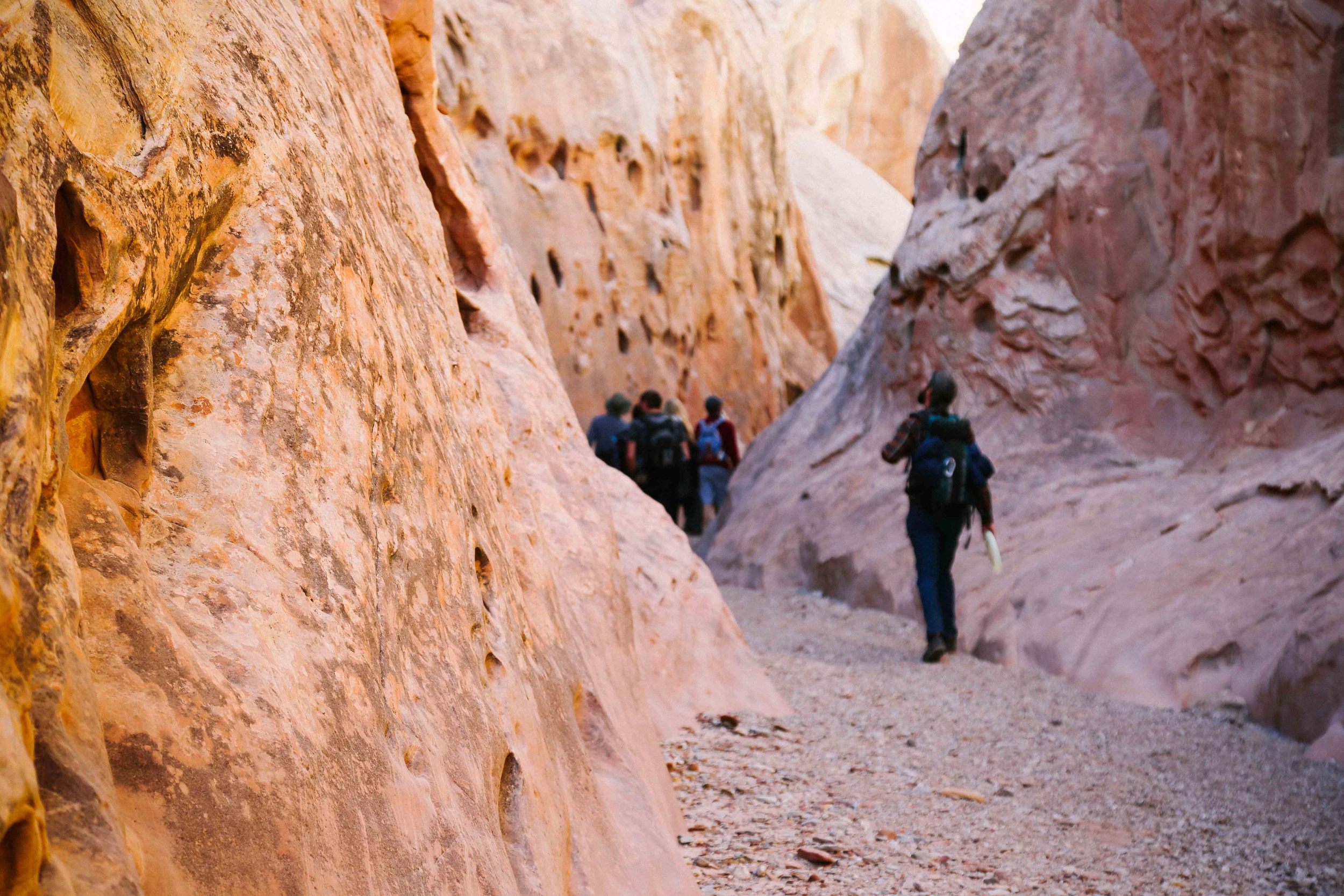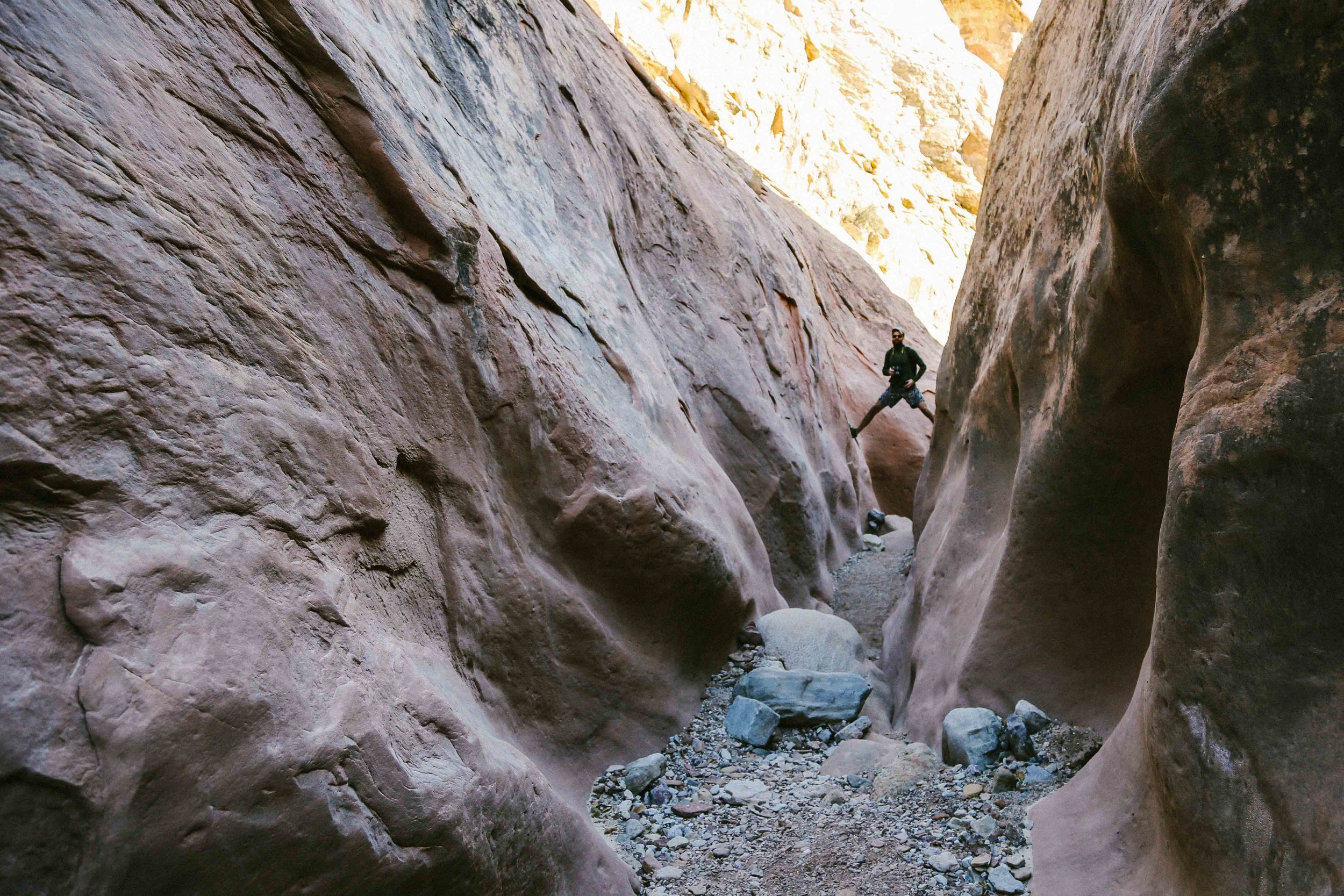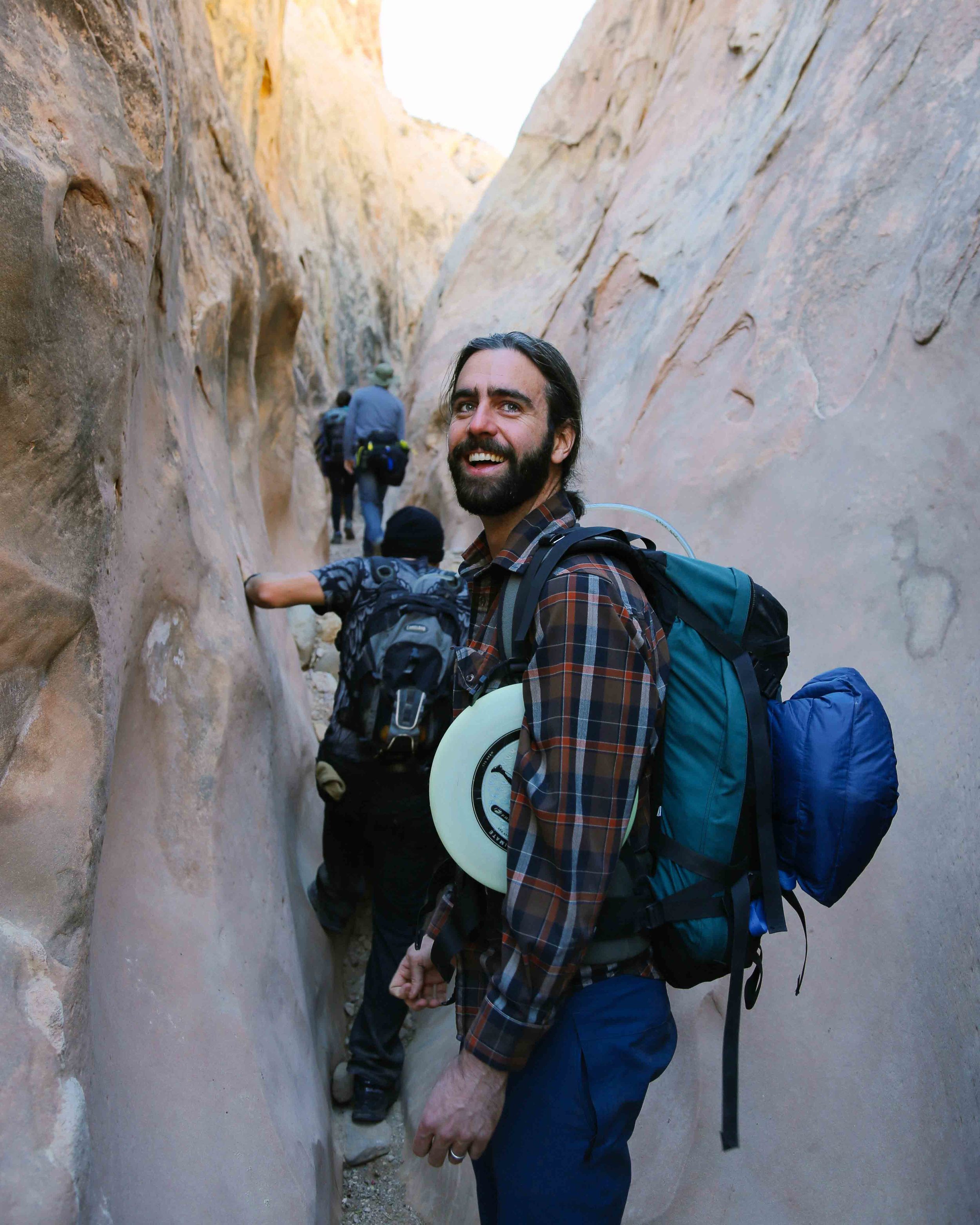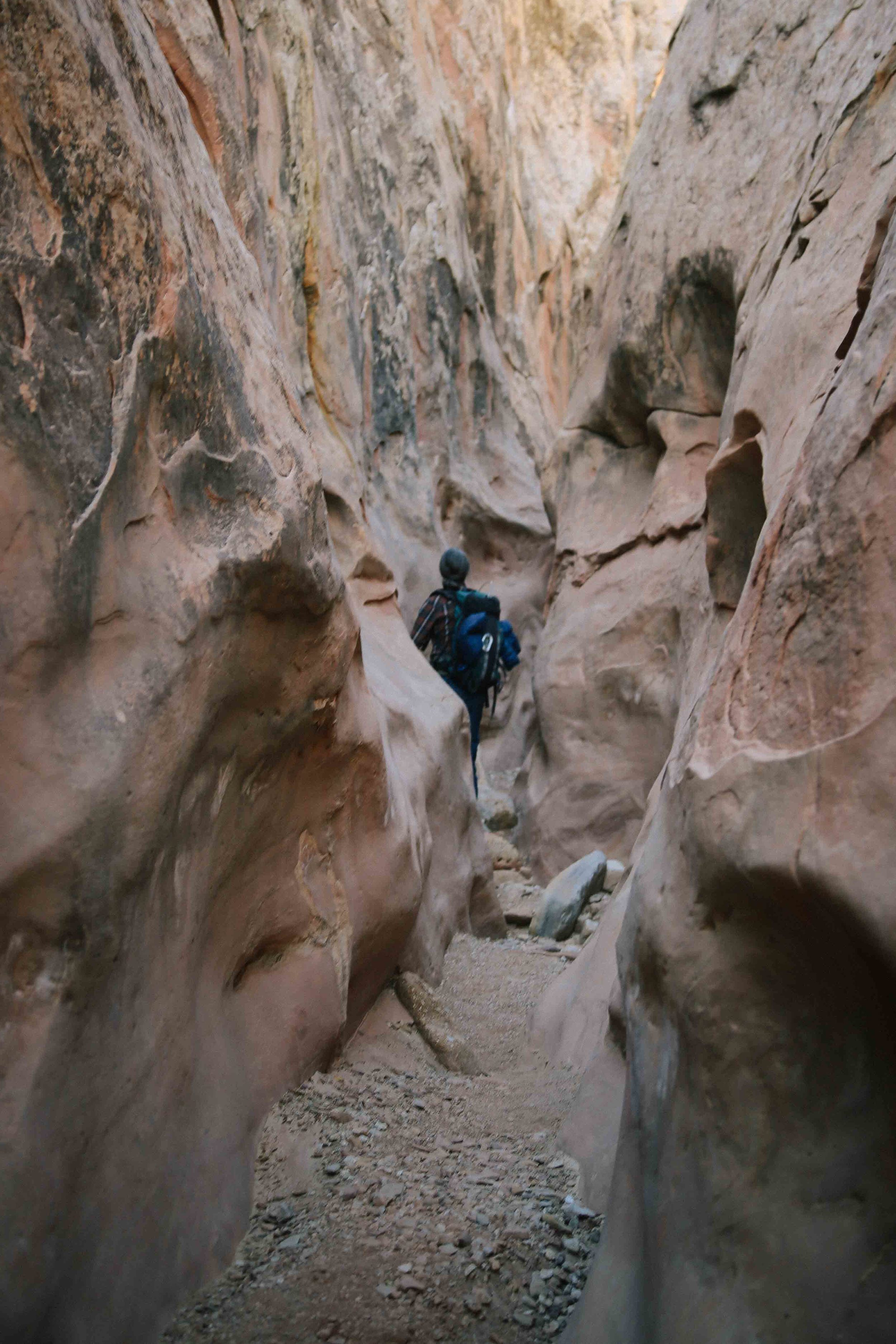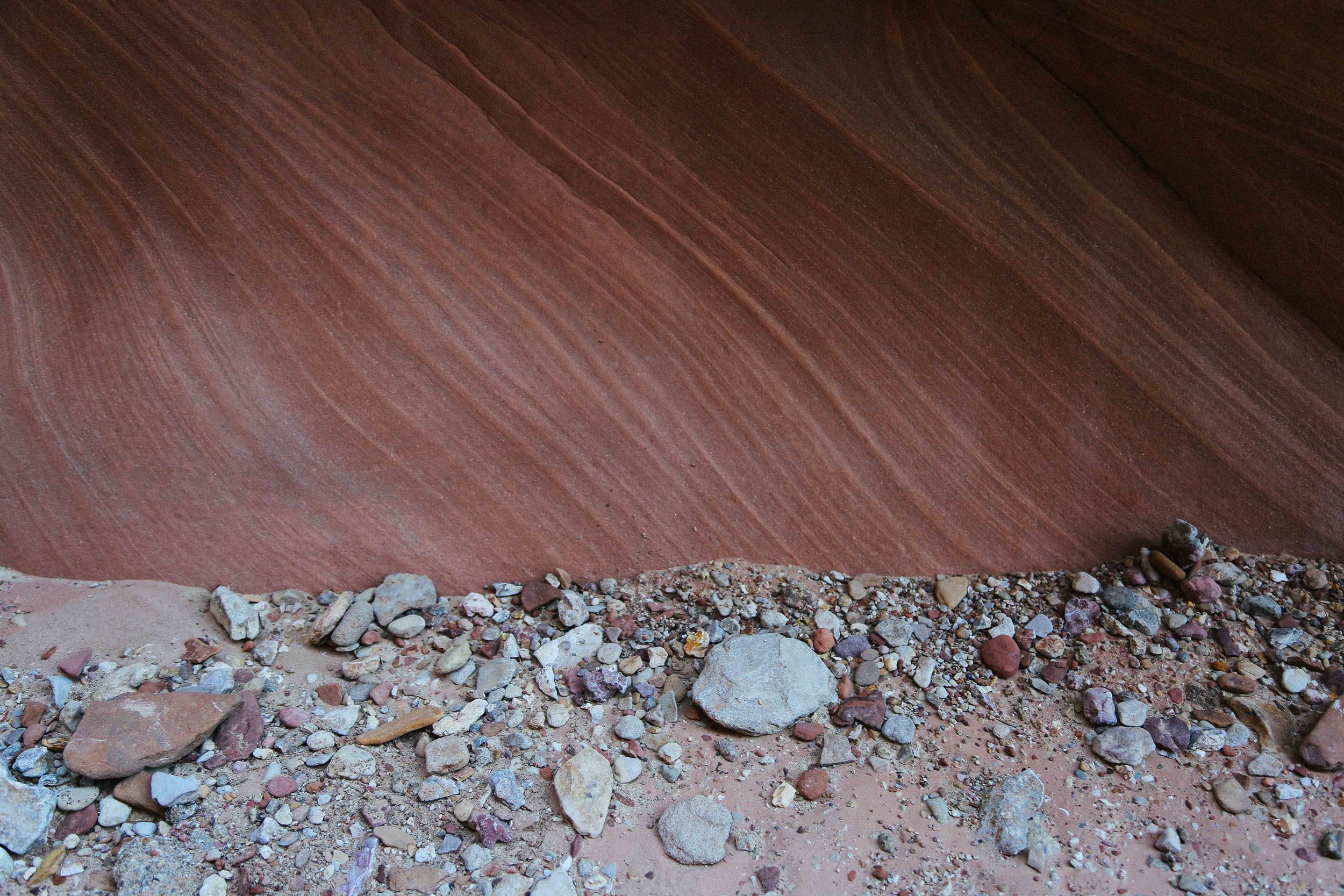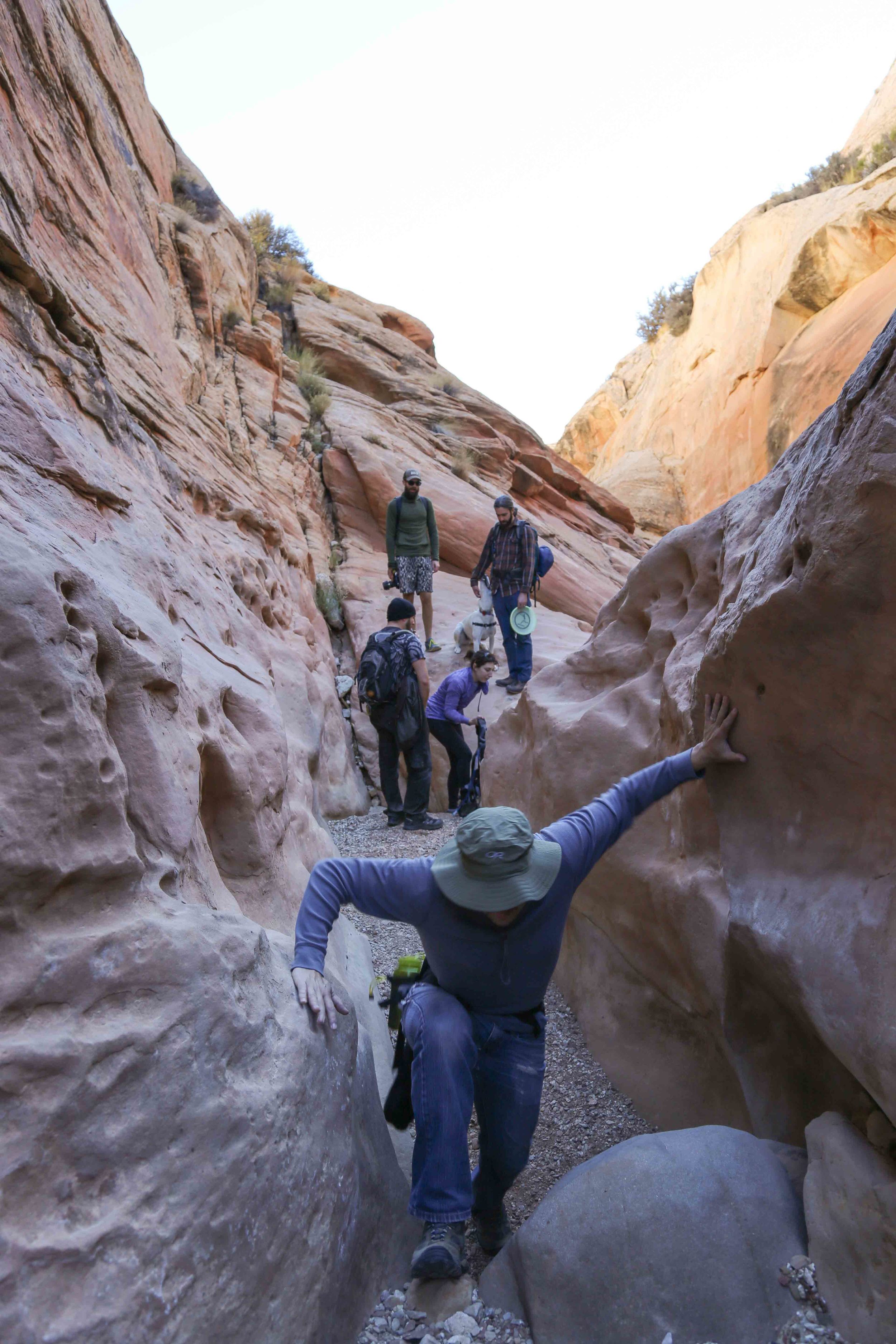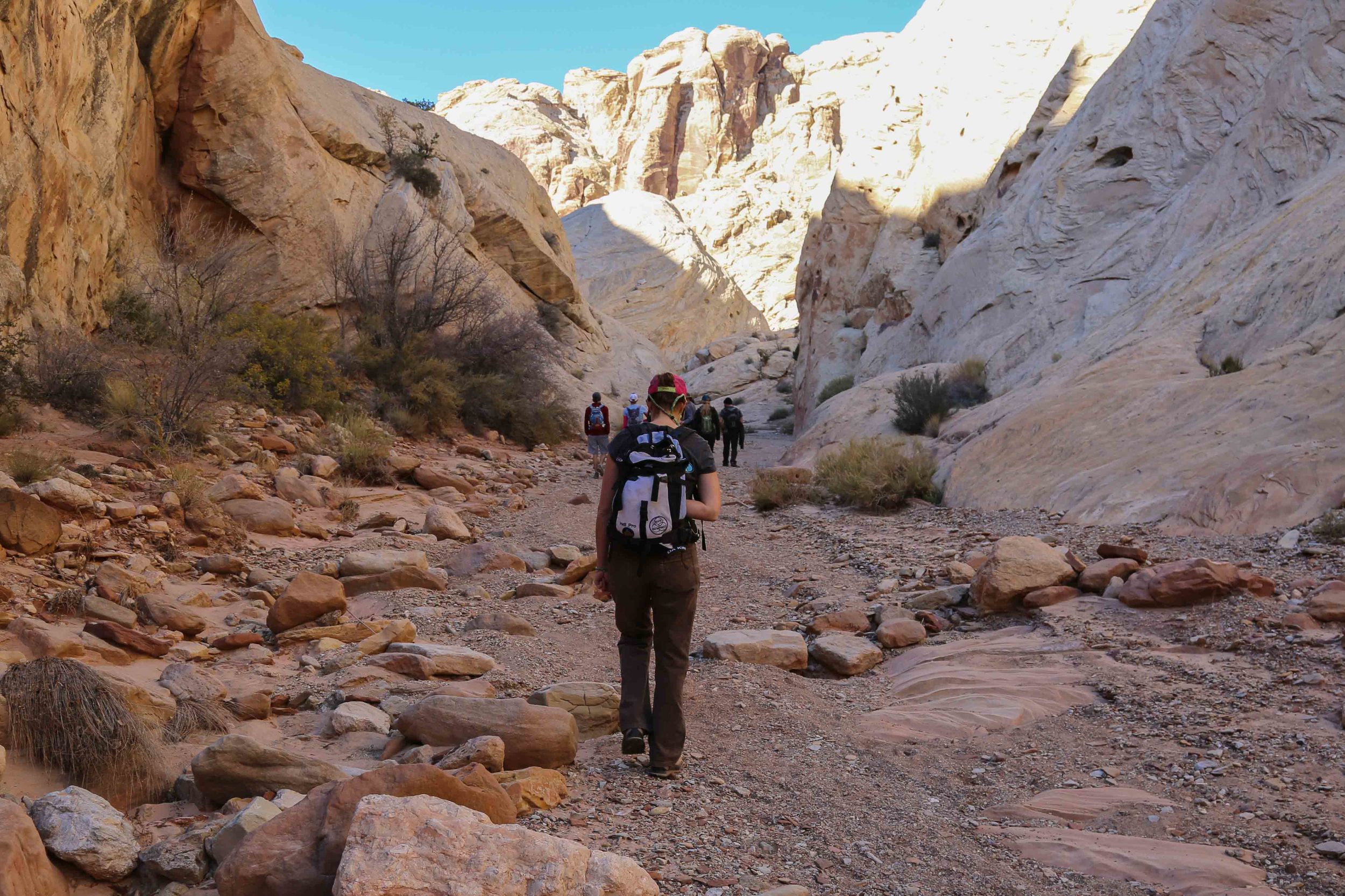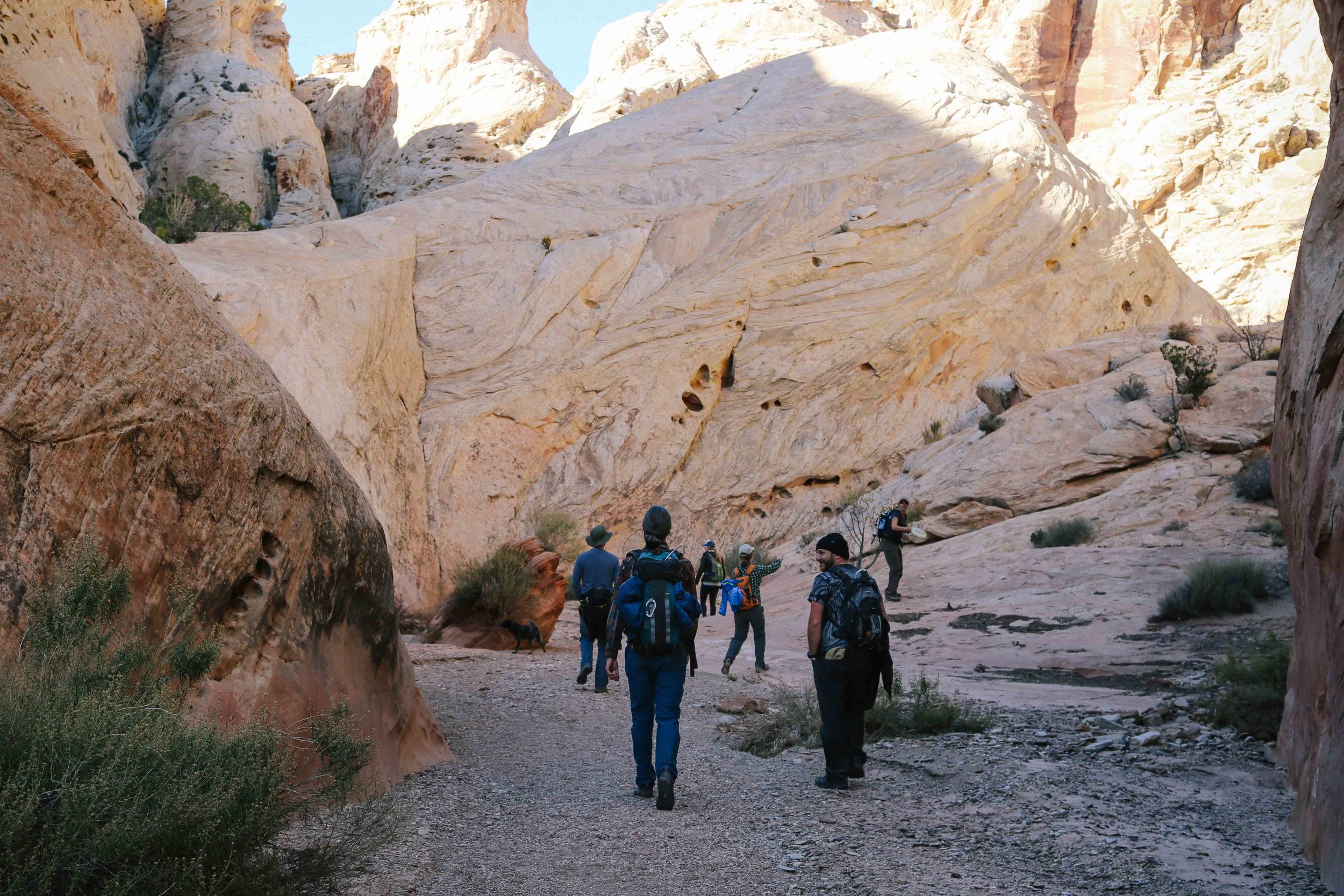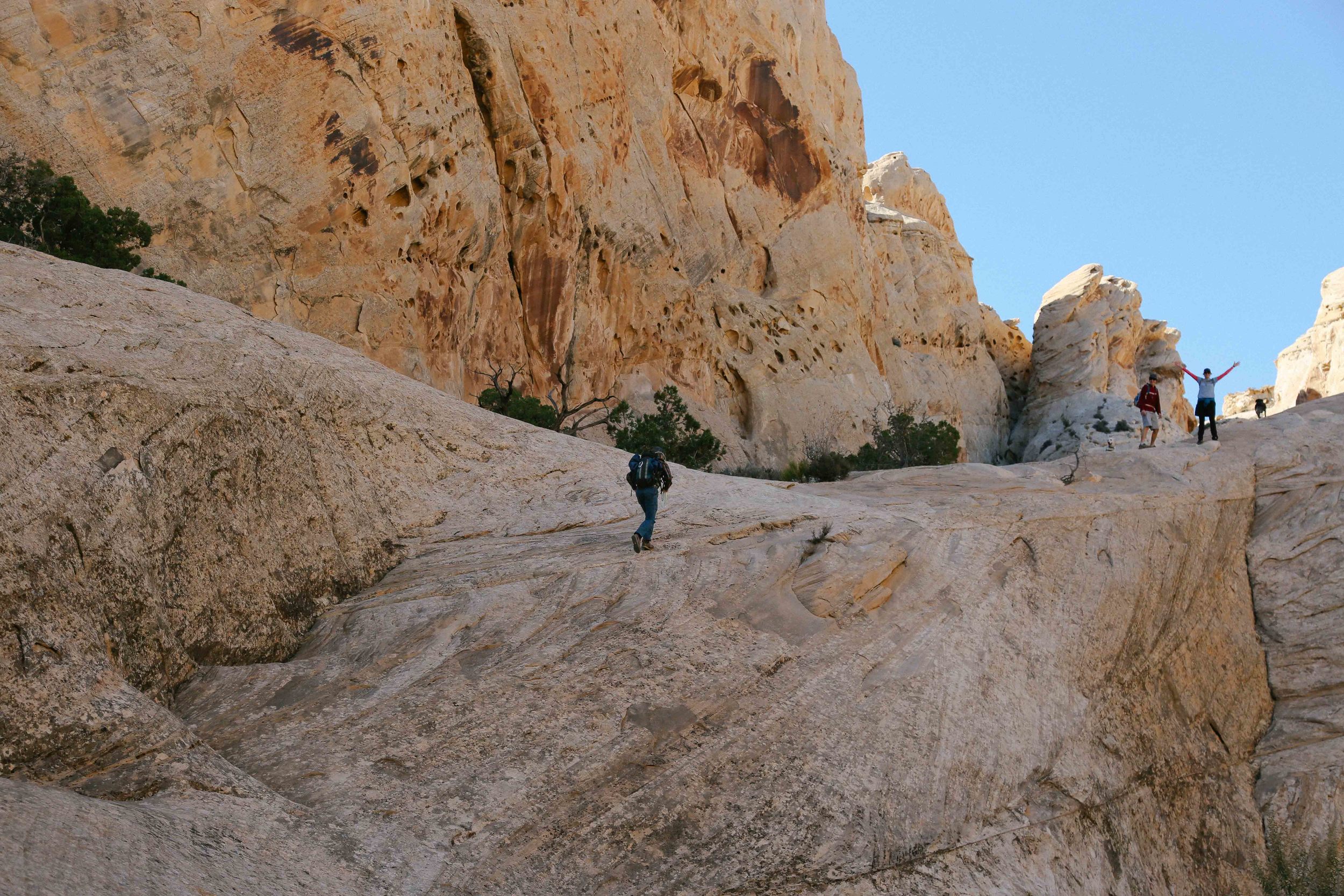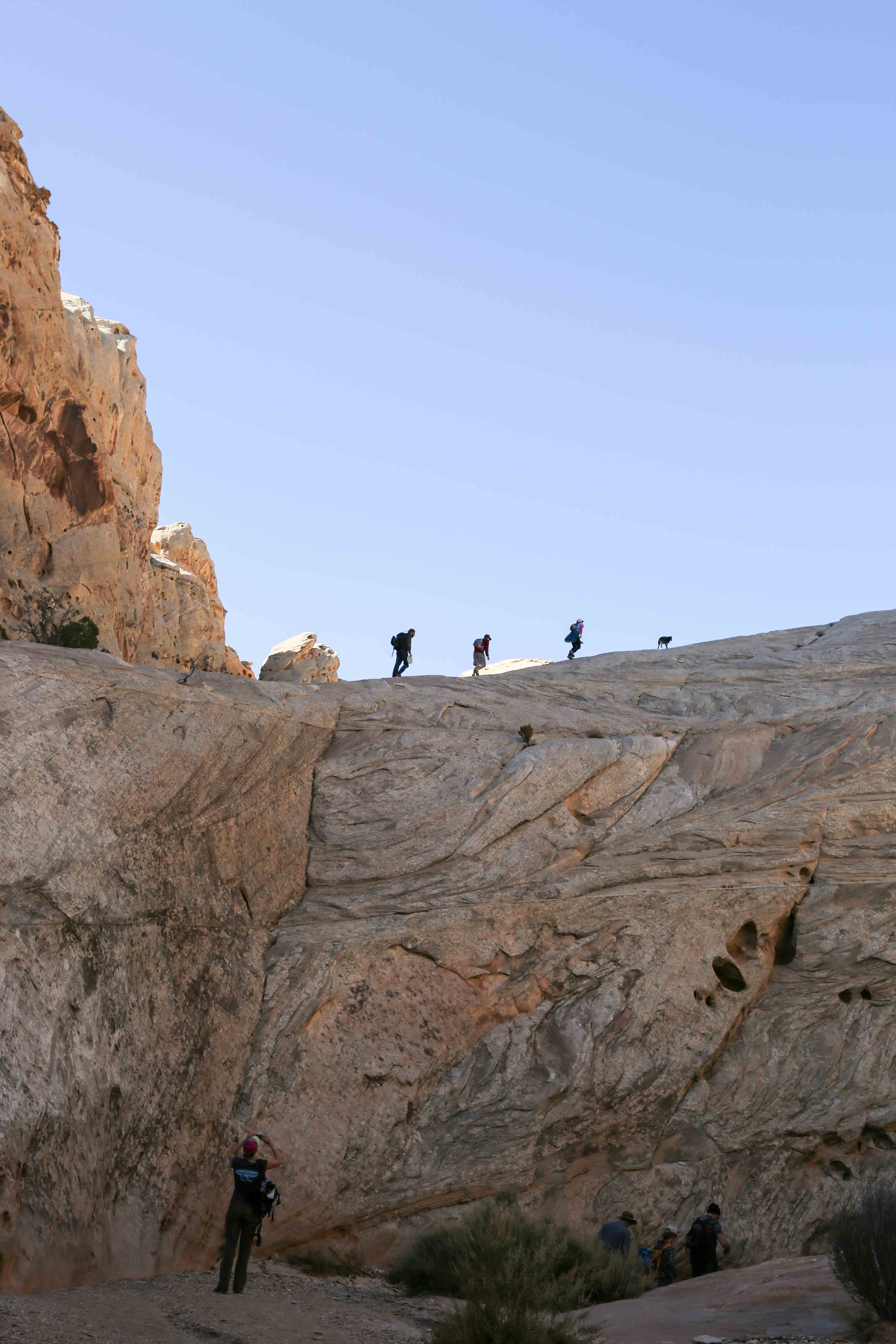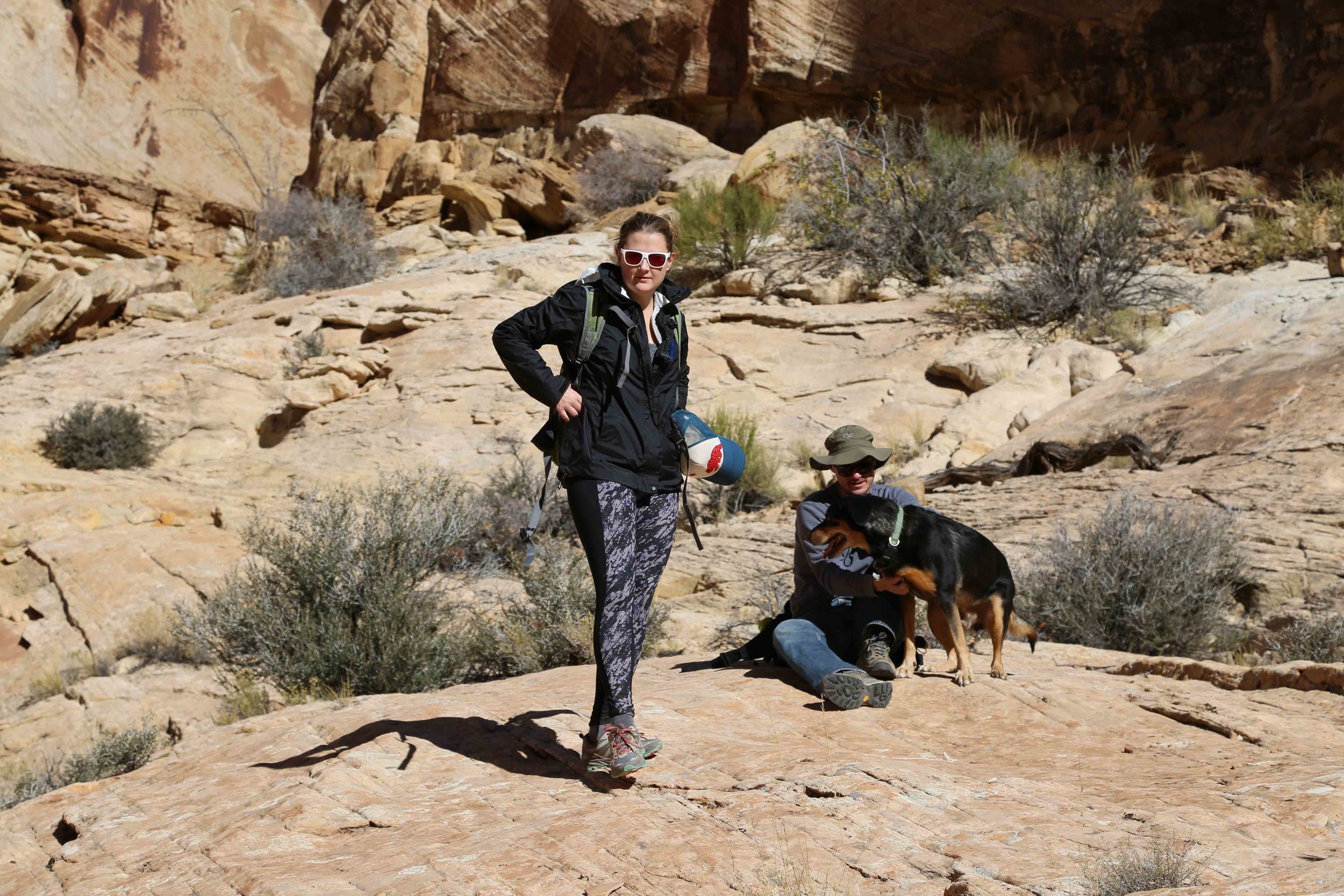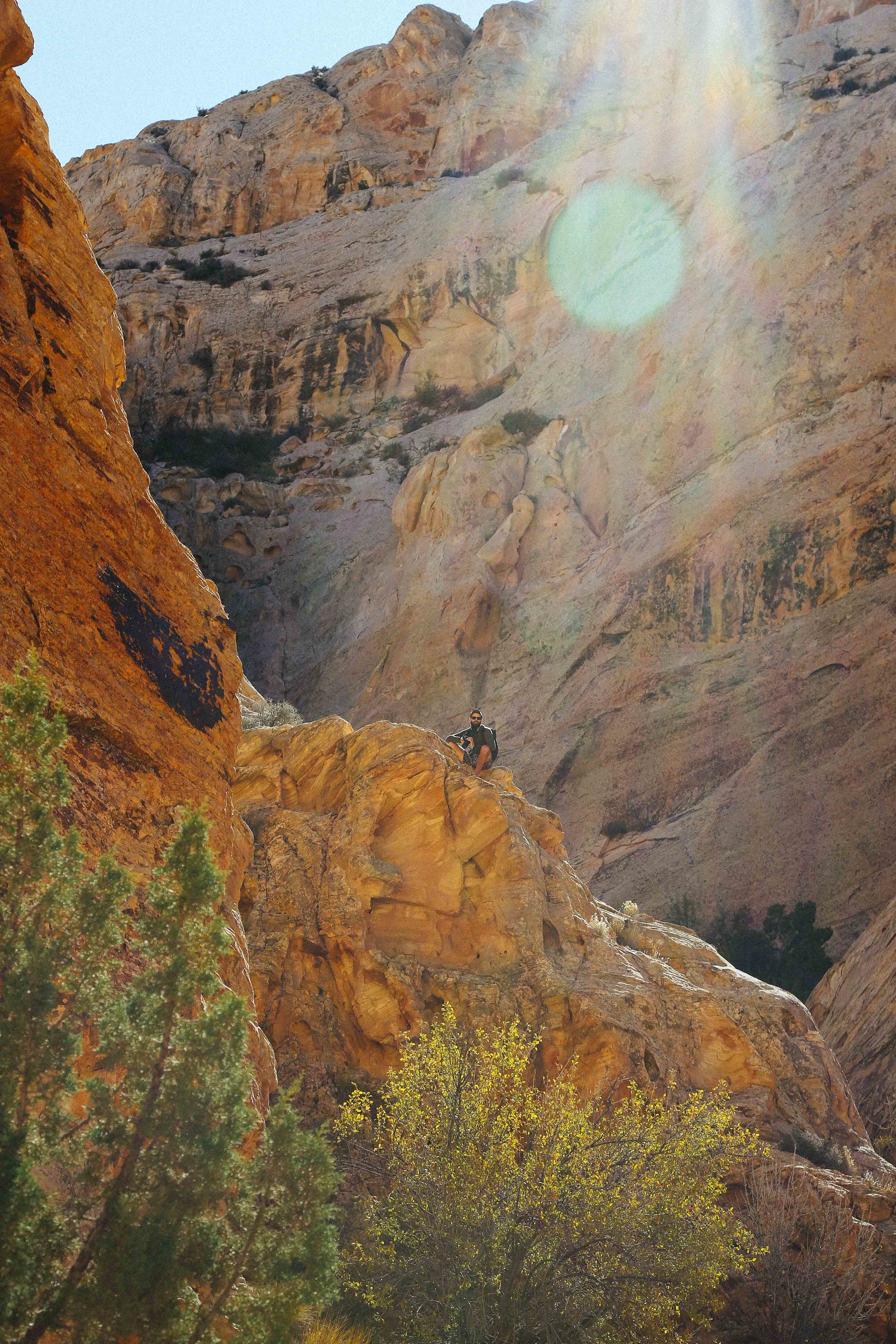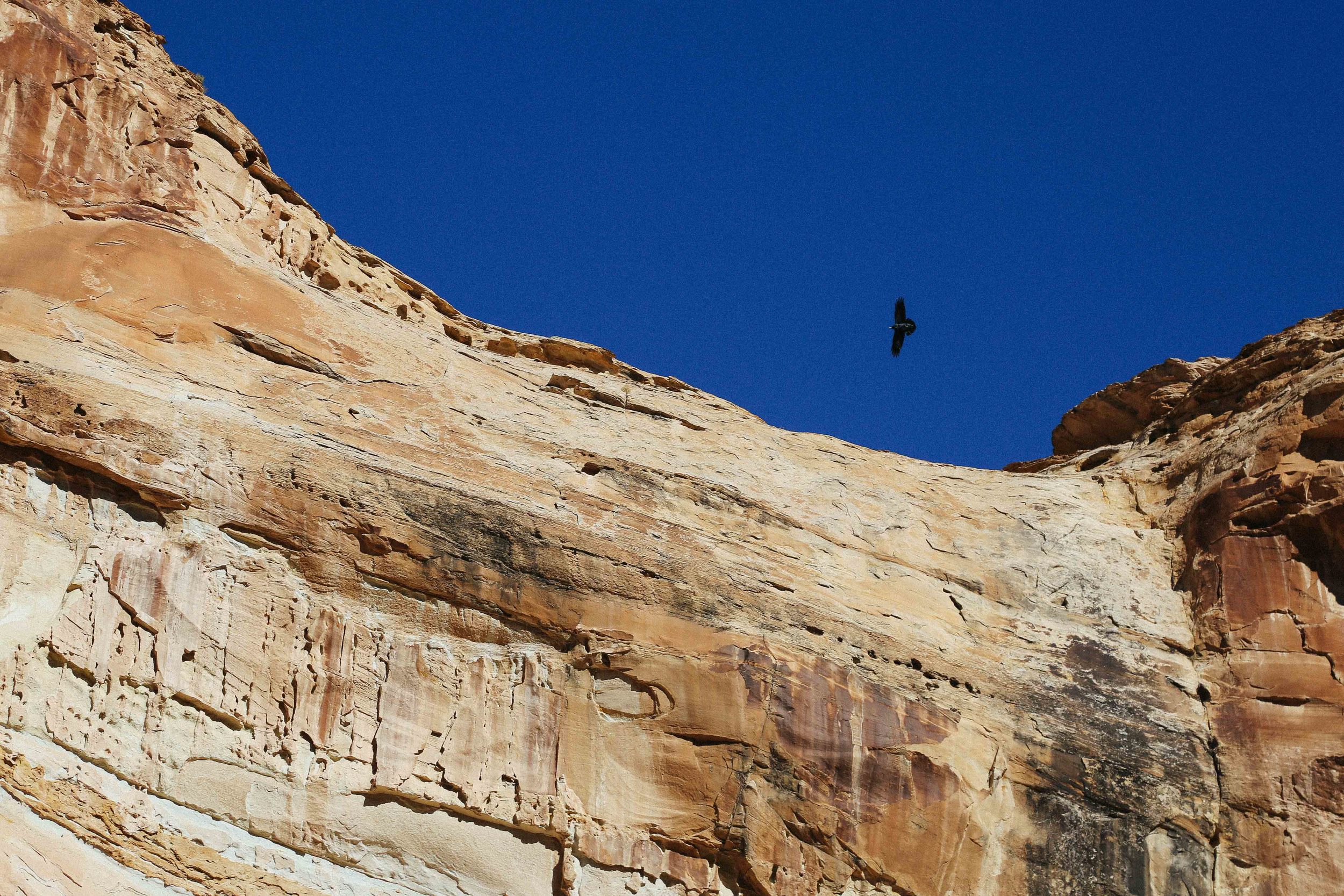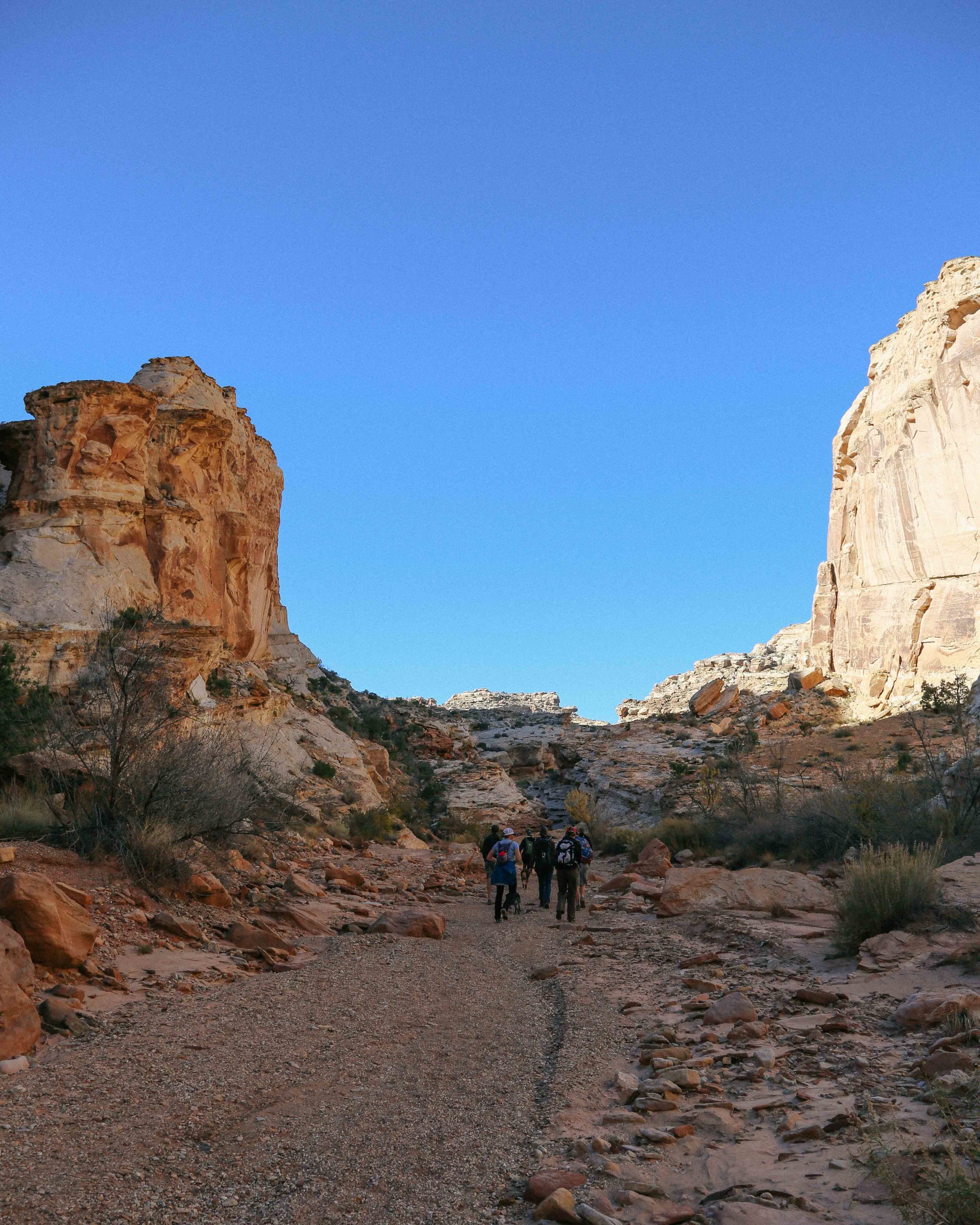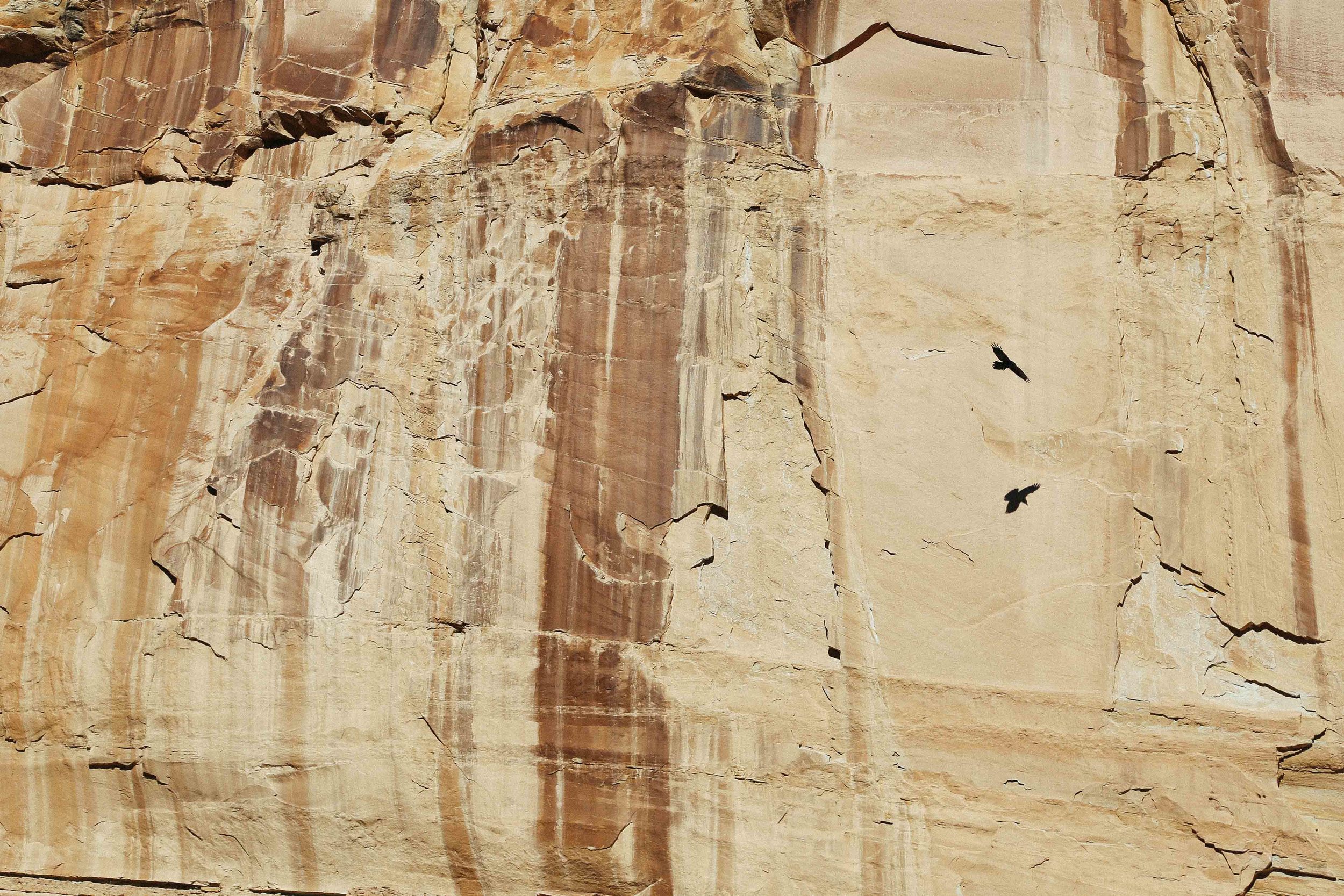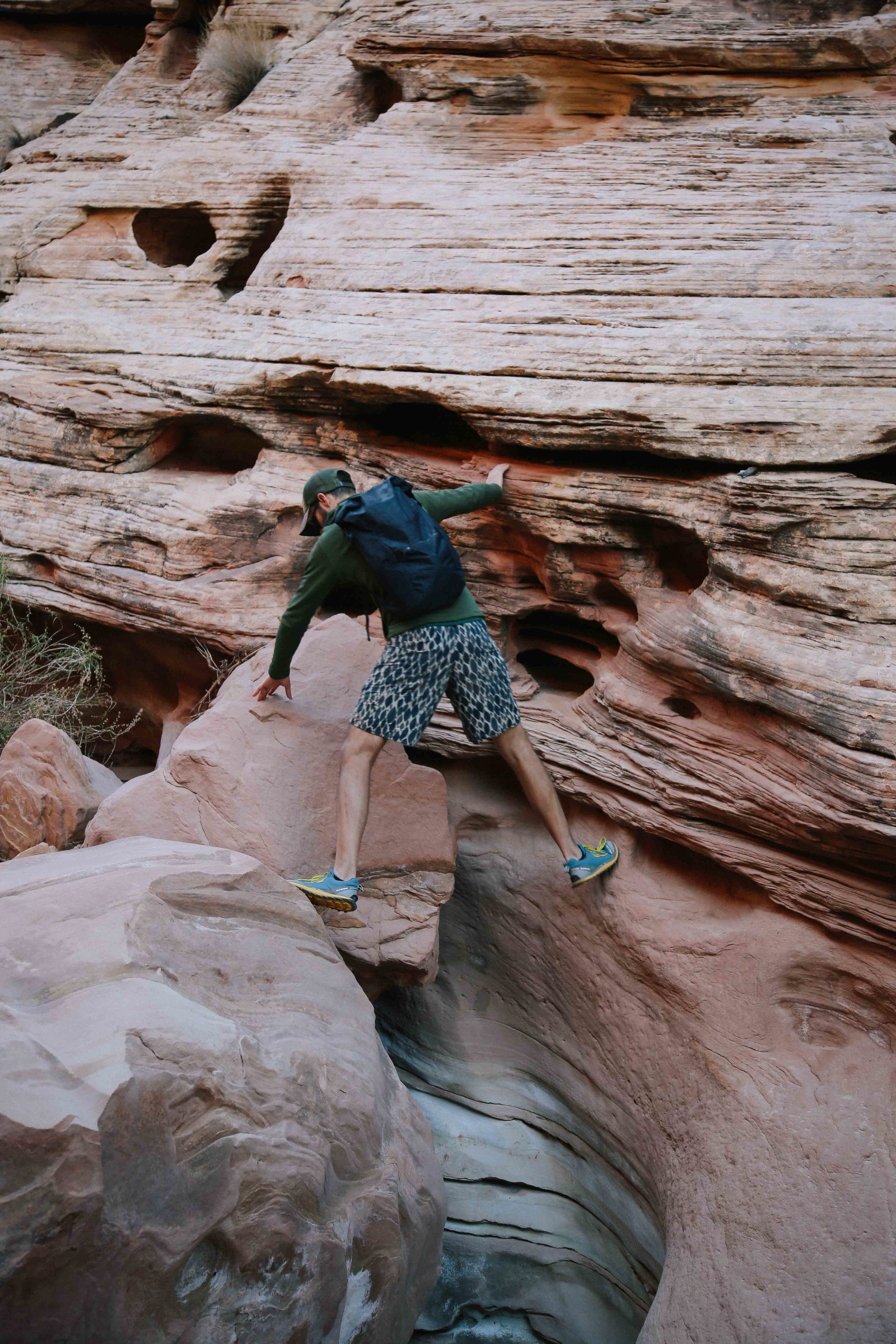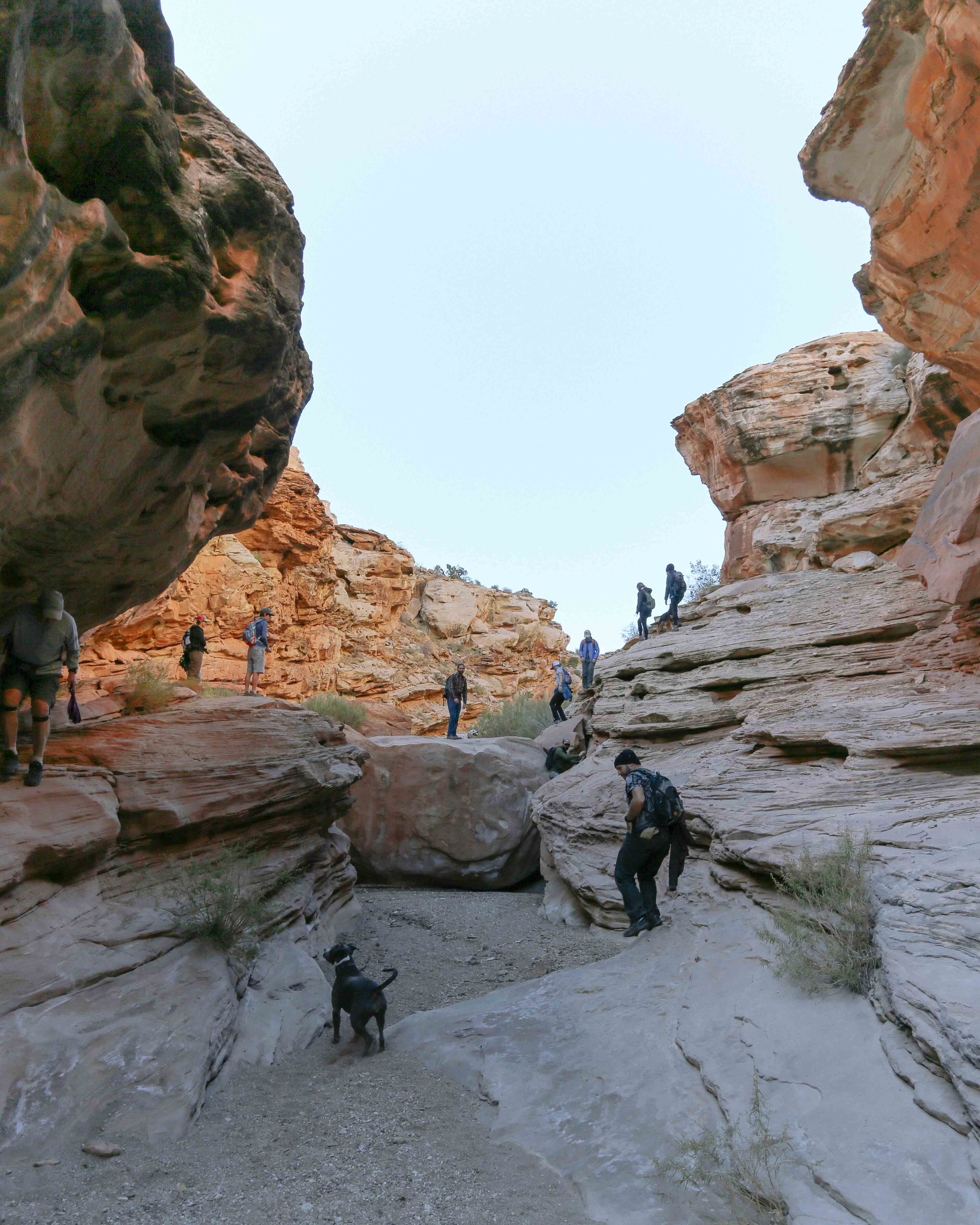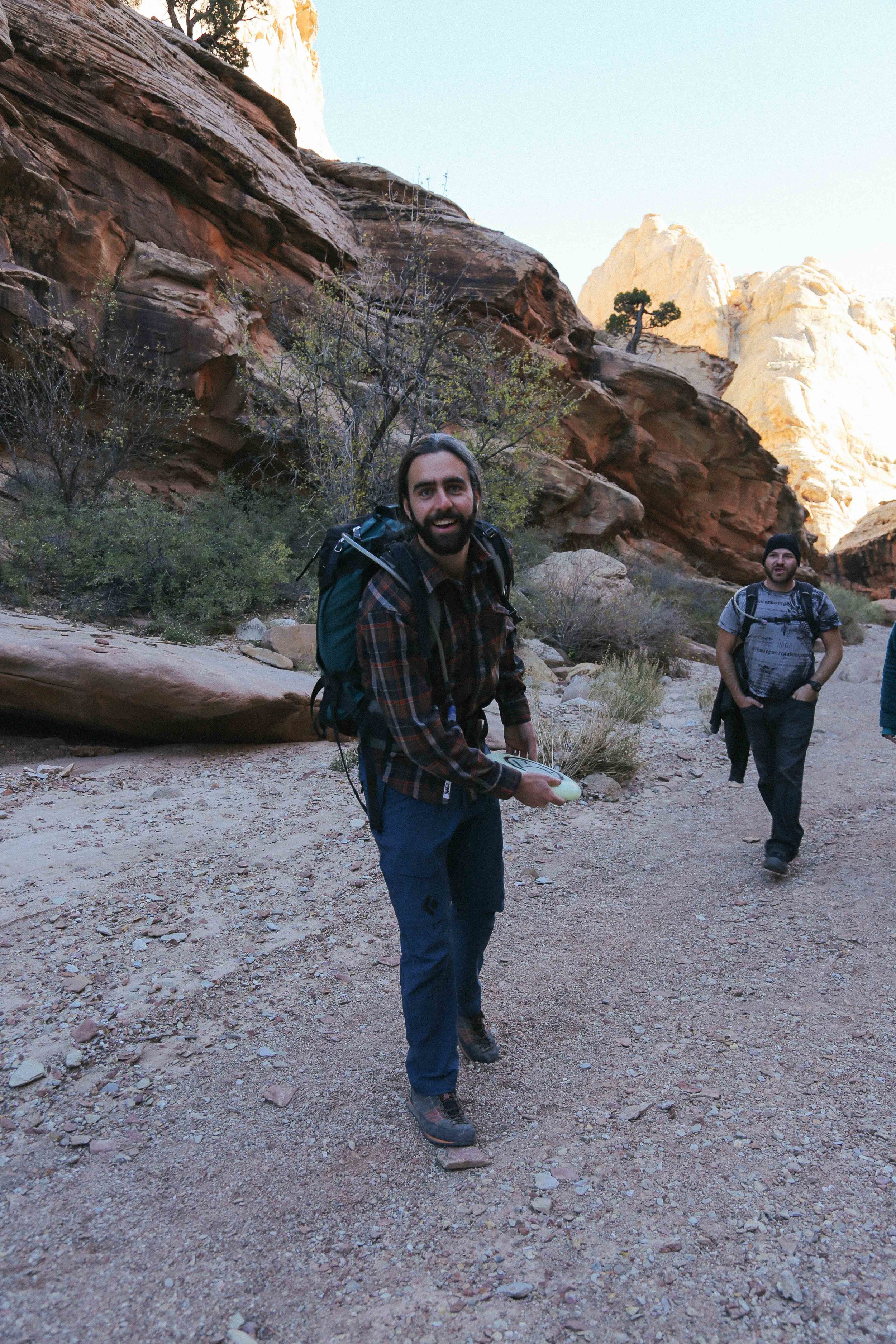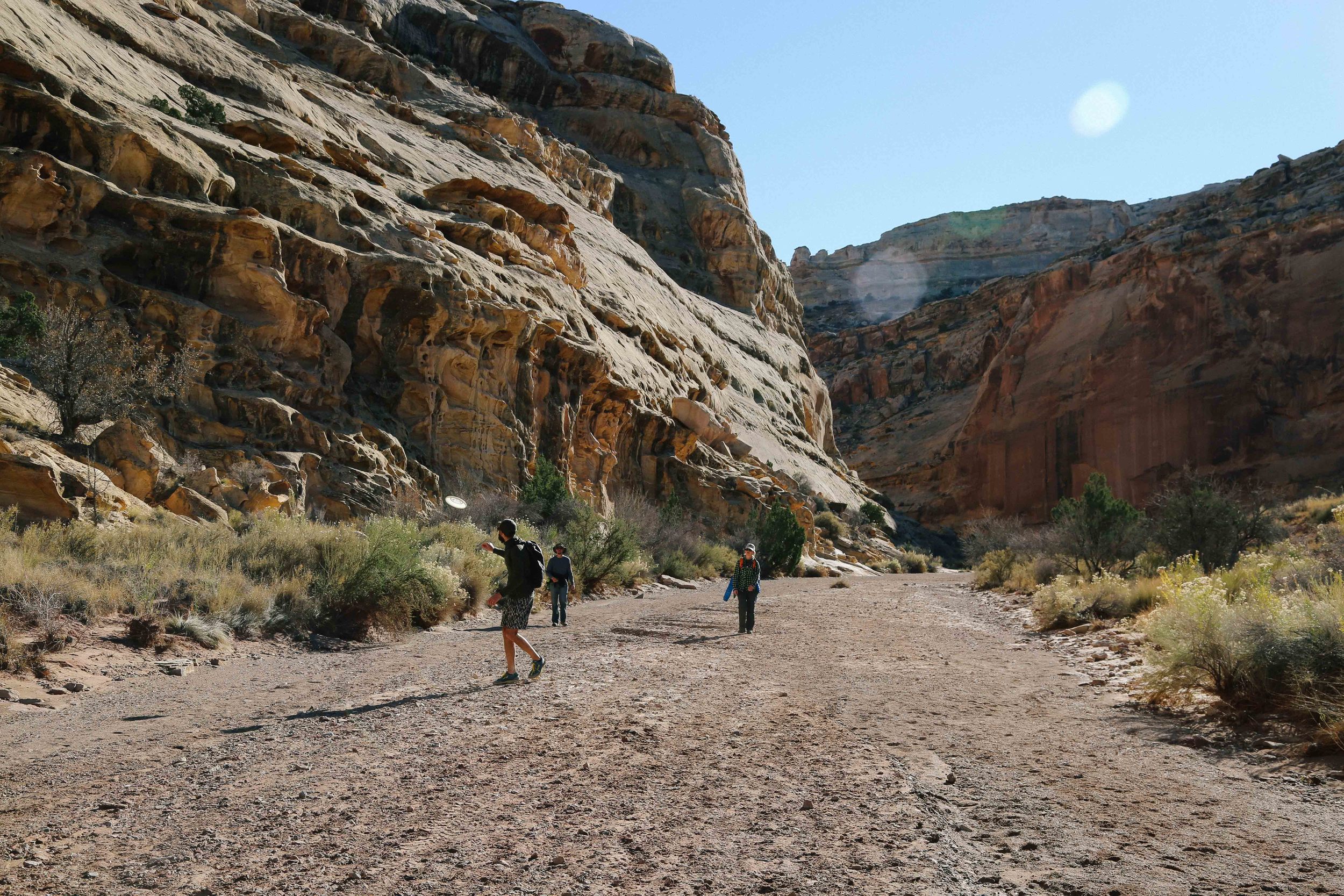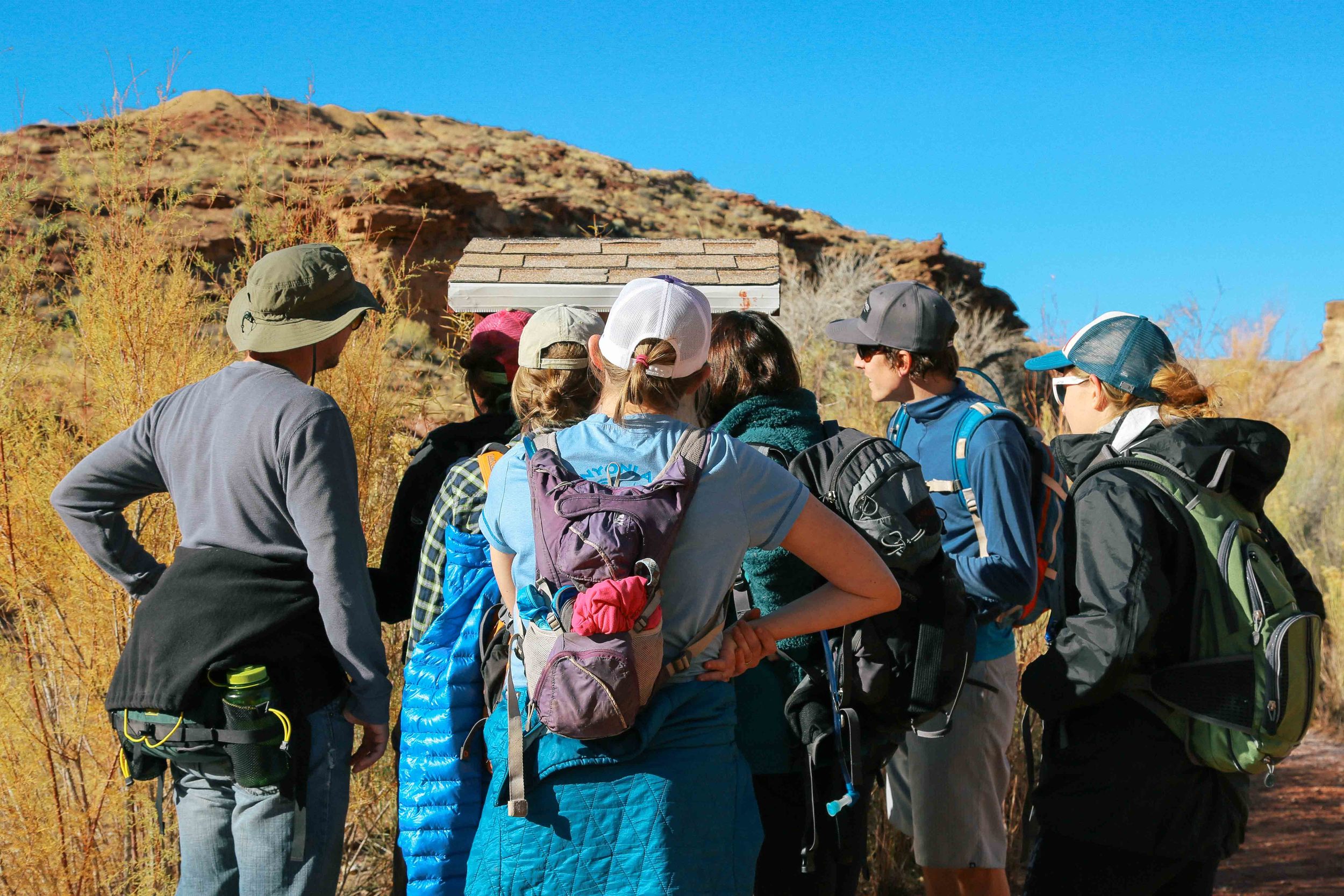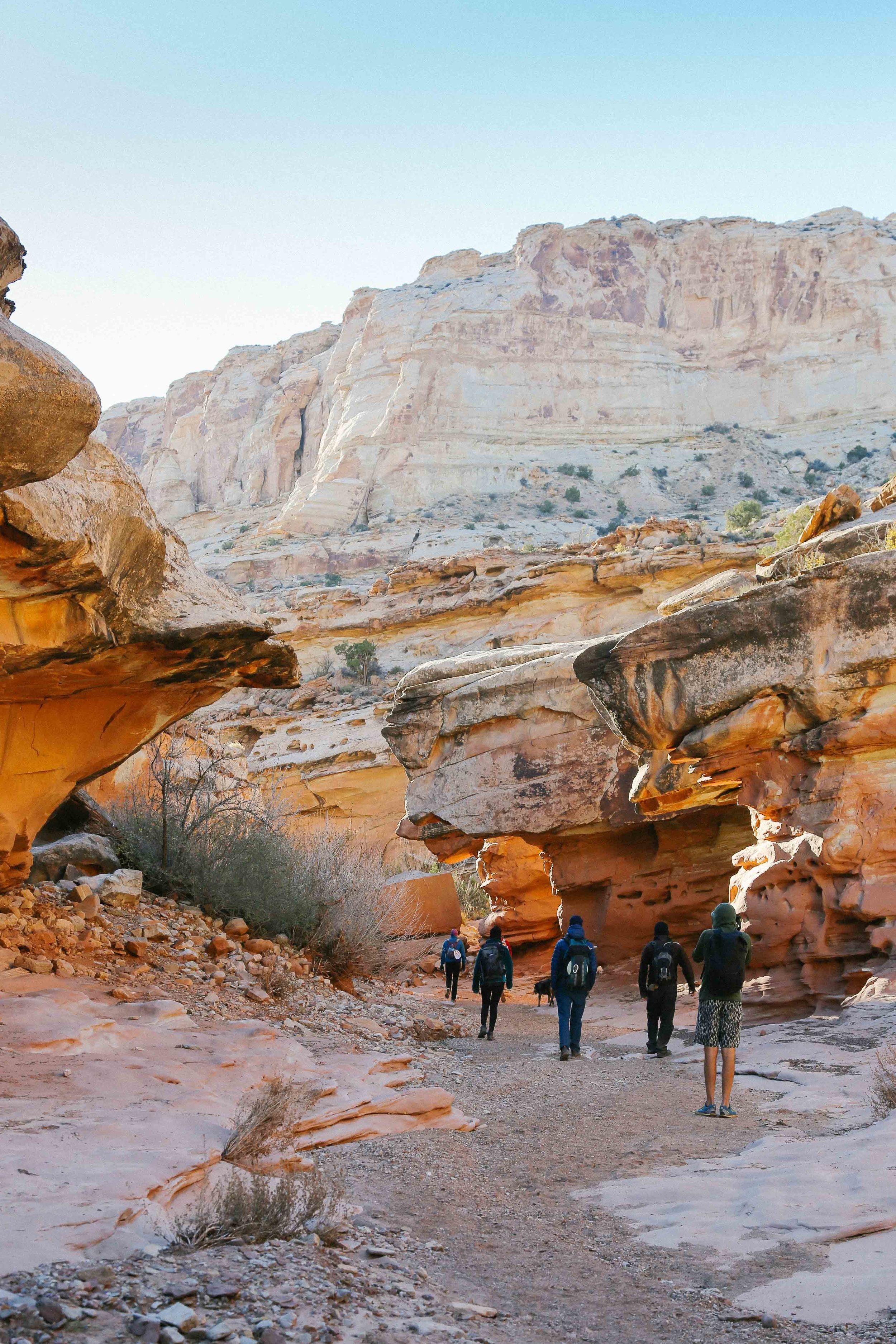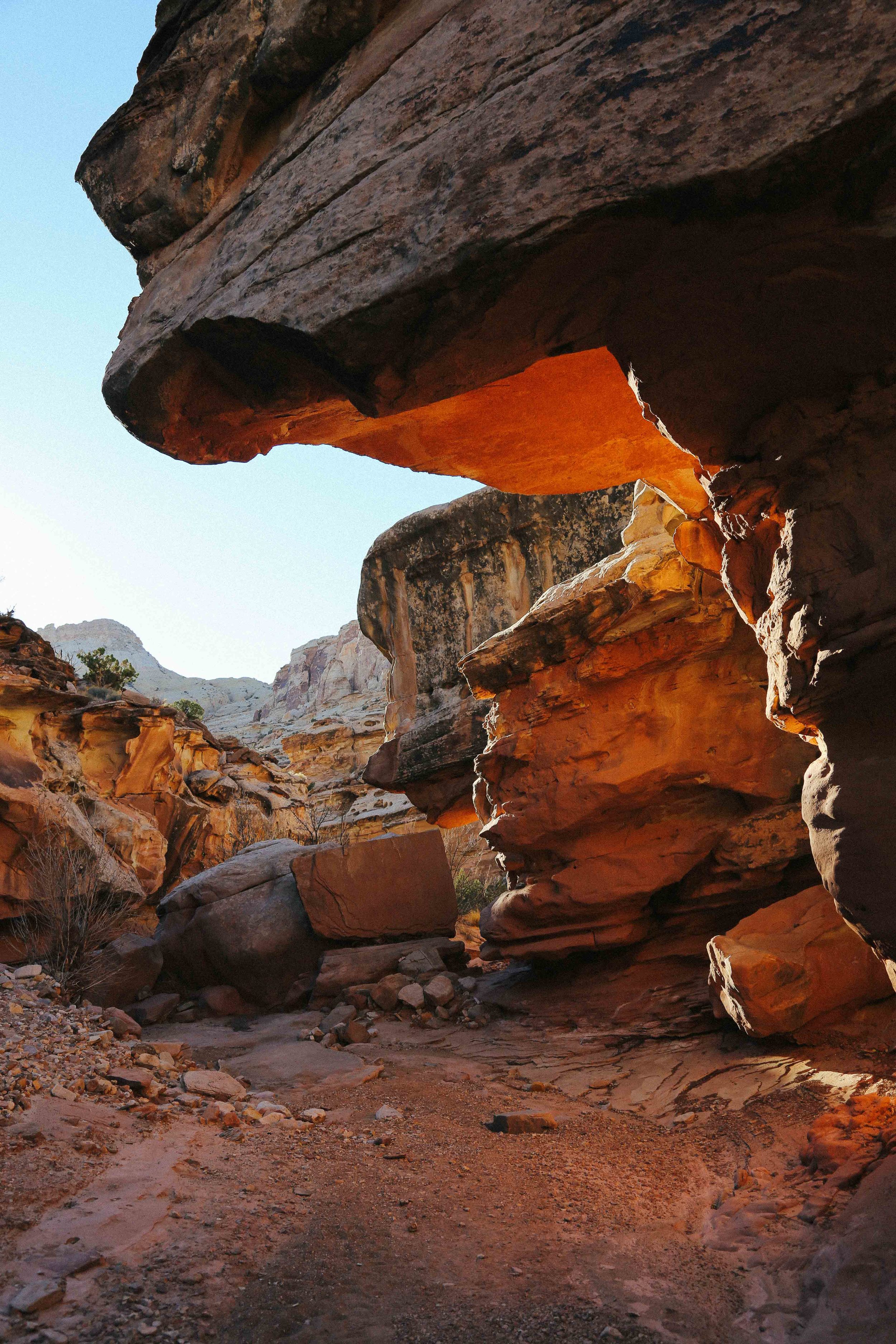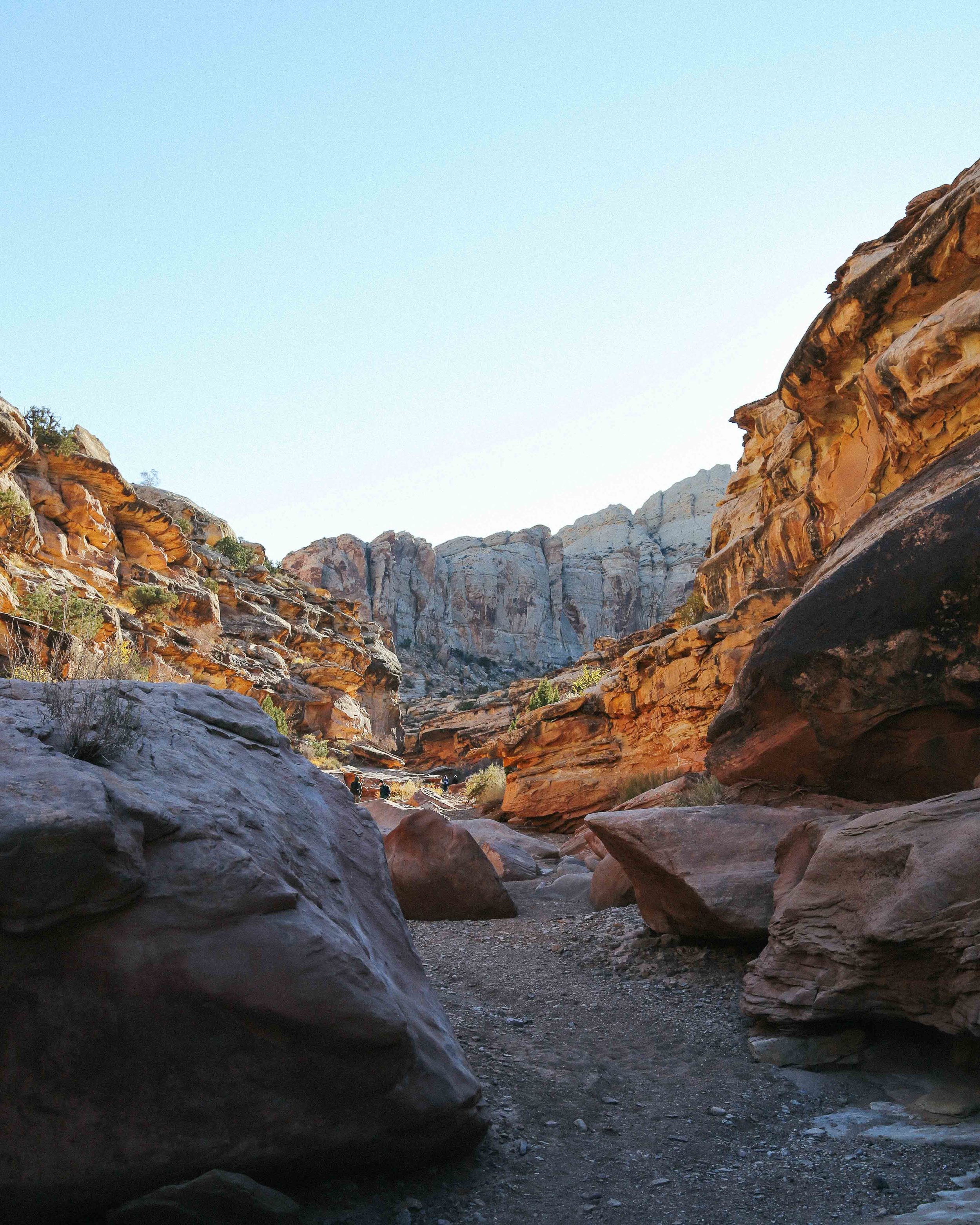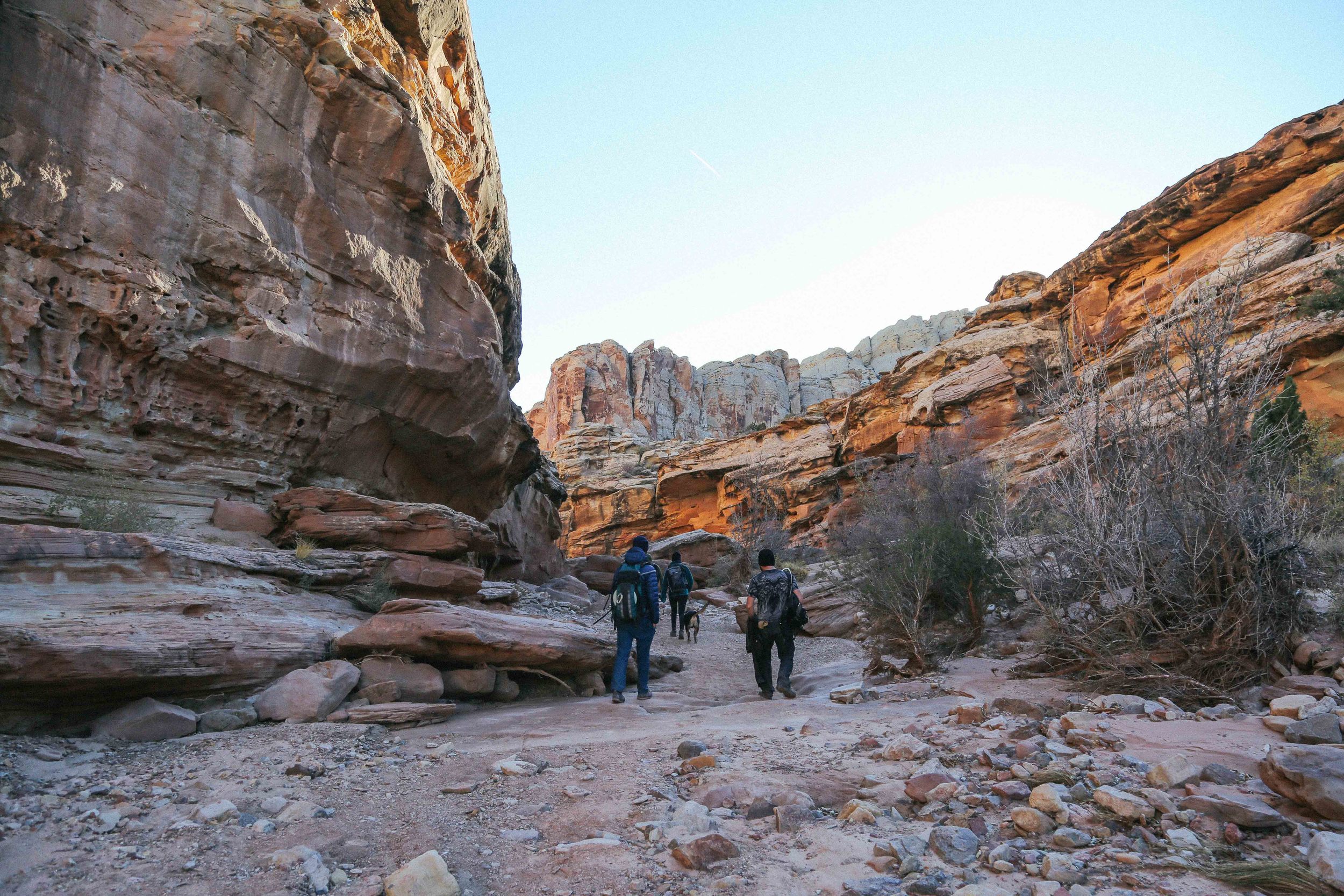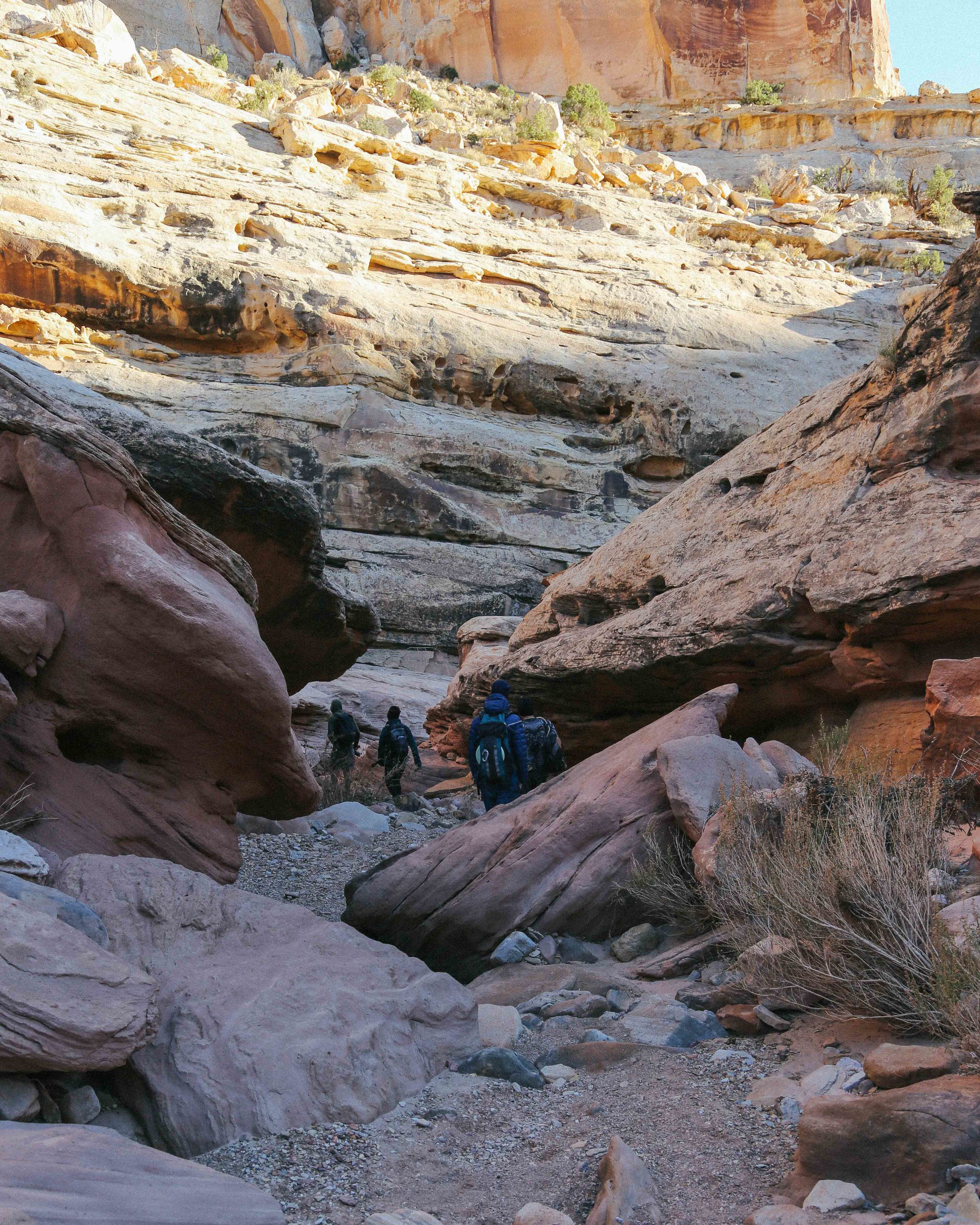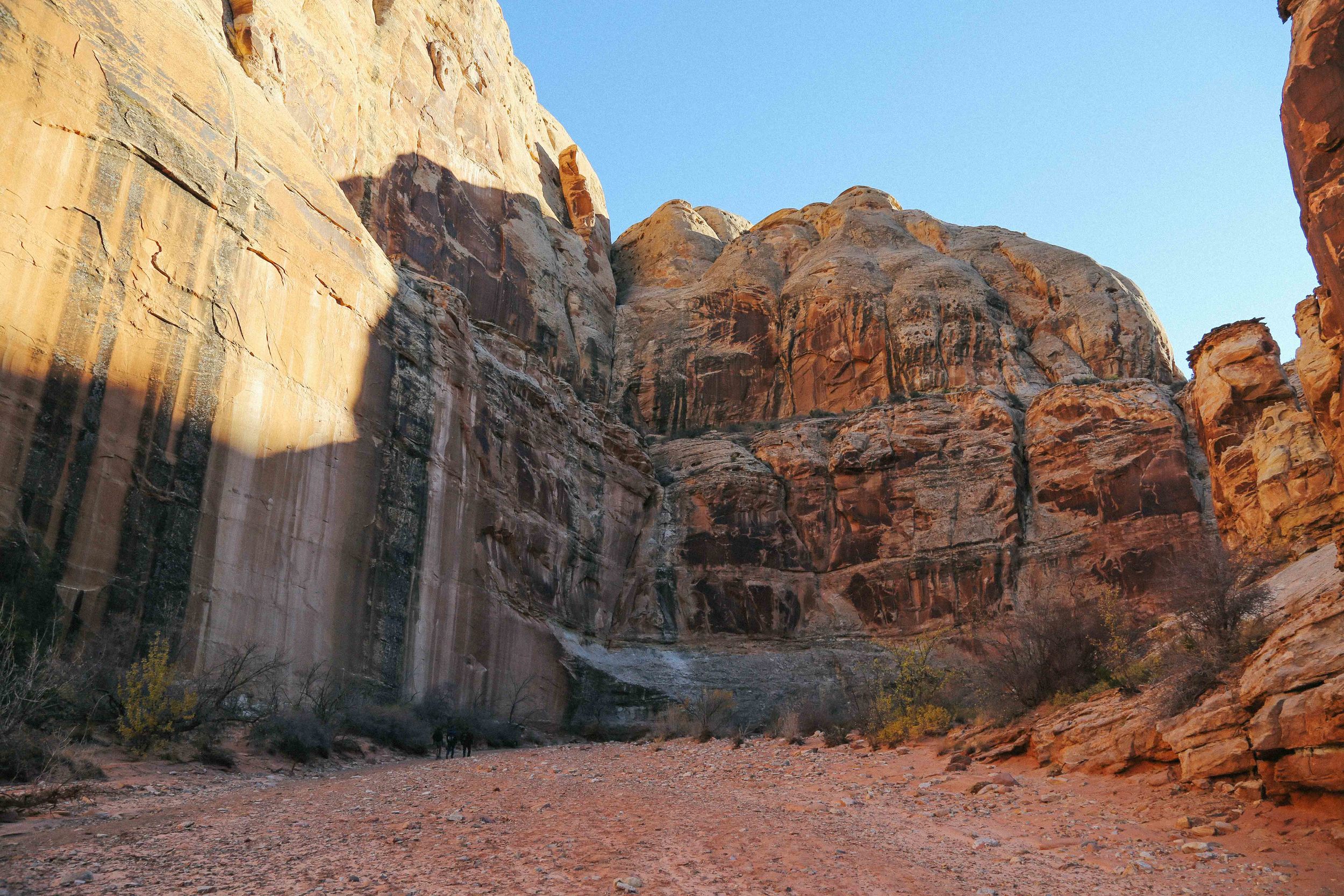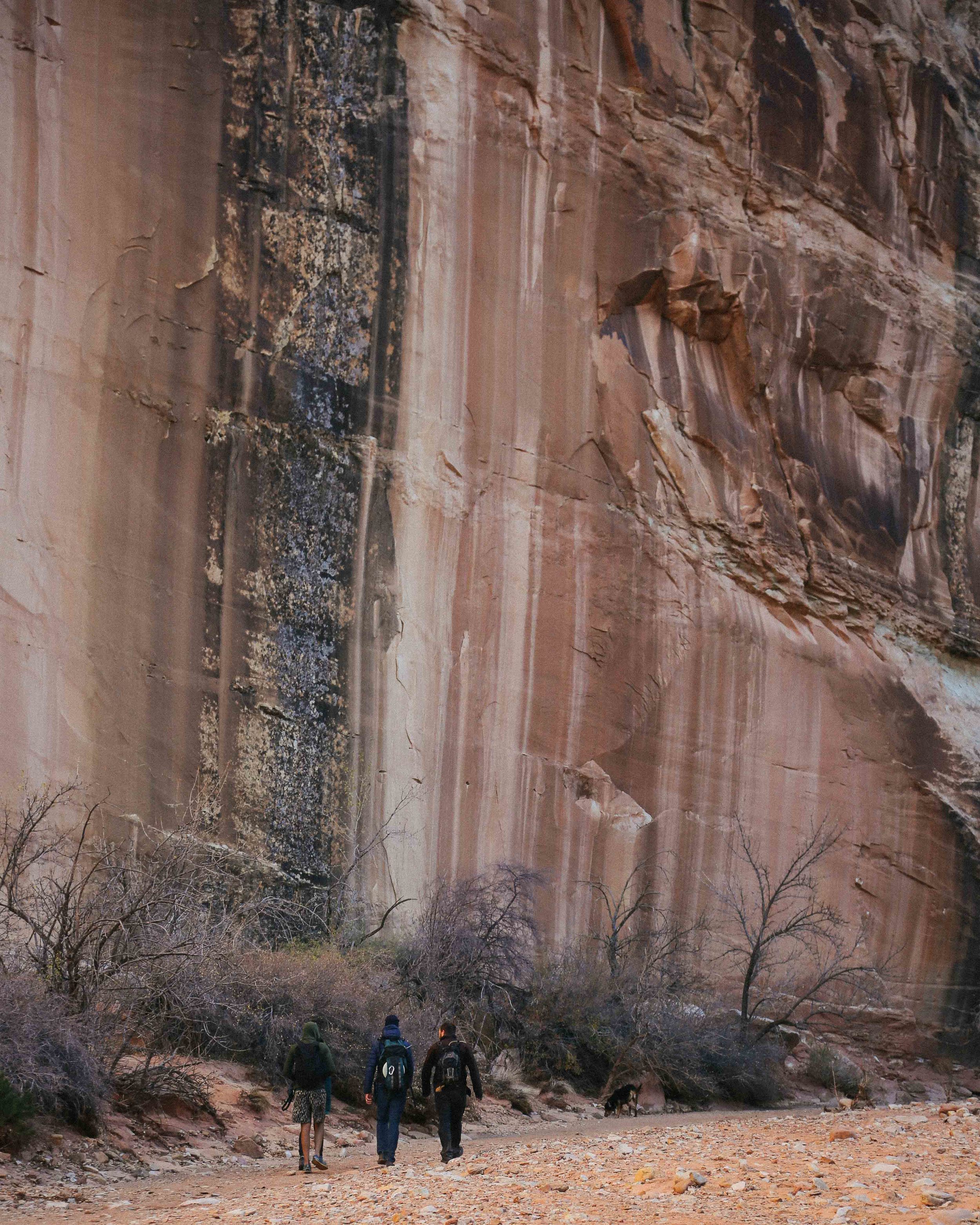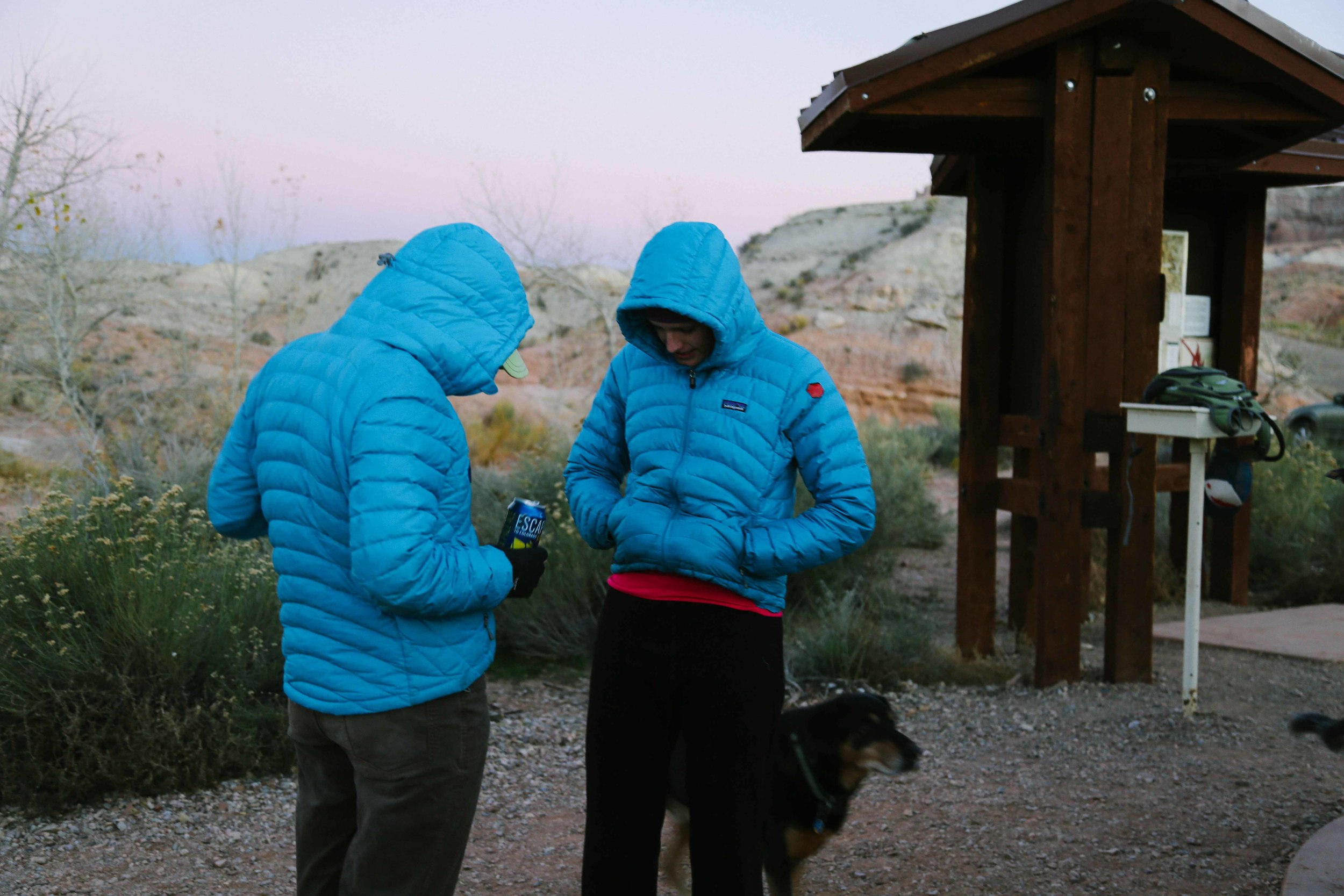Ermagahd. How kerhl are rocks?
If you are planning a vacation in the near future, here is some math: you can pay 1300 clams for a ticket to Paris and see La Tour Effiel, OR you can throw your ass into the back of your friend's car and pay $40-60 for gas and go and hang out in arguably one of the most visually stunning places in Utah (and there are LOTS of visually stunning places here) and camp on BLM land for days for FREE. Plus you'll get some exercise and probably return home with a sweet tan. Though, admittedly, there are few if any croissants.
I totally get it if that is a deal-breaker for you.
But when Richard is given the choice between rock-hopping and pastries for his birthday, he chooses rocks. And tacos! Because nothing motivates you to book it through a canyon or up and down a mountain like the knowledge that tacos are waiting for you at the end.
(Spoiler alert: you'll be getting a taco recipe soon! In the meantime, scroll through the photos below and read on for notes on our slot canyon adventure.)
DISTANCE (bell & little wild horse canyon loop) ~ 8.65 MILES
Trail type(s) - exposed/rocky/slot canyon/possible shallow pools
ELEVATION GAIN/LOSS - +721 feet
LOWEST ELEVATION (trailhead) - 4,952 FEET
HIGHEST ELEVATION - 5,673 FEET
DIFFICULTY - MODERATE (involves some class 3 climbing)
WATER SOURCE - none (nearest tap water - goblin valley state park)
DOG-FRIENDLY - YES
PARKING FEE - N/A
IDEAL SEASON(s) TO hike/CAMP - spring, fall
Closest RANGER STATION - goblin valley state park
CLOSEST DEVELOPED CAMPING - GOBLIN VALLEY STATE PARK
TRAIL OVERVIEW:
Bell Canyon and Little Wild Horse Canyon are two sets of slot canyons connected by an open, expansive wash, forming a hiking loop that begins and ends at the Little Wild Horse Canyon trailhead. Of the two, Little Wild Horse is considered by many to be "more spectacular," and certainly contains the narrowest of the slots. Little Wild Horse is made up of three distinct slots punctuated by larger openings and atriums, while Bell is a continual, long and winding slot which widens and narrows in different areas.
The trailhead is the same for both canyons, and involves a half-mile hike to the fork for both trails. To start with Bell Canyon, take the left trail in the fork. To start with Little Wild Horse, take the right trail. The trails are quite obvious, given that you follow the path of water cutting through rock, though there are a few cairns in spots where the trail is less clear. The main area where you should pay attention is in the wash; there is an obvious sign with a map when you are heading from Bell Canyon in the direction of Little Wild Horse Canyon, though it is harder to see the sign when coming from Little Wild Horse toward Bell Canyon. If you started the loop in Little Wildhorse Canyon, you will want to favor the left (West) side of the canyon and keep your eye out for the sign for Bell and for the split that begins the canyon.
Some people will simply walk down the Little Wild Horse Canyon trail for as long as they feel comfortable, just to get a sense of what it is like to be in a slot canyon. But being that it is possible to drive to the trailhead, the trail is relatively flat, and the hike can be completed well within a day (if not a few hours), it is well worth hiking the full loop. And, given that the Class 2-3 scrambling can be accomplished without aid, it is also a great introduction to canyoneering.
DIRECTIONS TO LITTLE WILD HORSE CANYON/BELL CANYON TRAILHEAD
From I-70 West (Green River):
- Take Exit 149 for UT-24 W toward Hanksville
- Turn left onto UT-24 West
- Turn right onto Temple Mountain Road
- Turn left onto Goblin Valley Road
- Turn right onto Wild Horse Road (destination will be on the right)
Visit here for full directions from Salt Lake City.
THINGS WE LEARNED ABOUT CAMPING (LATE FALL/EARLY WINTER CONDITIONS):
- Holy crap, does it get cold at night. I woke up to pee sometime between 2-4am and there were ice crystals on the inside of the tent. Bring the warmest sleeping bag you own. In fact, bring two. I have this bag and my toes were popsicles when I came back from my nighttime pee, and it took them forever to warm up again.
- One of the best ways to keep warm (with a partner or friend) is to zip two sleeping bags together into one giant bag, slip two individual sleeping bags next to each other in the big bag, and then sleep in the individual sleeping bags like you are some kind of poofy, inedible turducken. Any dogs can go in between the two sleeping bags within the giant bag. Props to Richard for knowing to do this.
- Speaking of dogs, make sure you bring a jacket or blanket for your furry friend(s), plus a dog bed or pad for him/her to sleep on so s/he isn't lying on the freezing-cold ground. We think of Lucca as an Arctic wonder dog because he voluntarily takes naps in the snow, but I have never in my life seen him so cold. We put him on a dog bed after our hike and wrapped him in a jacket and wool blanket and he stayed there, all frozen-burrito like, until we scooped him up and went to the tent to sleep.
- If I have just freaked you out about the cold, know that there are other places for you to stay, such as yurts! Two yurts are located about a quarter mile from the the Goblin Valley State Park visitor's center, and look quite cozy. You're going to have to redo that math from earlier, though, as it costs just over $100/night to stay in a yurt (and no pets are allowed).
- Camping at Goblin Valley State Park is popular, and campsites quickly fill up. There is ample BLM camping off of dirt roads nearby, and many of the BLM spots are actually closer to the Bell/Little Wildhorse trailhead than the Goblin Valley campsites. Everything is quite close together, however (the Goblin Valley Visitor's Center is about 7 minutes from the trailhead), so you'll be in a good spot wherever you camp.
THINGS WE LEARNED ABOUT HIKING (LATE FALL/EARLY WINTER CONDITIONS):
- If you are doing the full Bells/Little Wild Horse loop (which you should!), we recommend starting at Bells (which is the left trail at the fork just beyond the trailhead, with Little Wild Horse being the right trail). Most people start at Little Wild Horse, so you'll miss most of the crowds by beginning at Bells, and then you'll go through the final slot late in the day when few (if any) people begin to hike, so there is a slim(mer) chance you'll bottleneck in the slot.
- Be advised that you will be scrambling over boulders, loose rocks, etc. at various times during the trip. Wear sensible (close-toed) shoes. Tape or wrap any injured ankles/wrists to stabilize them, as you will be using all of your appendages to do stuff. The trail is punctuated with Class 2 and Class 3 climbing (meaning scrambling + more dicey scrambling) due to boulders getting lodged in the slot canyons during floods.
- If you are bringing a dog, note that some of the areas in the canyons are rather technical, and that the rock is slick. Your dog needs to be confident and physically fit, and you need to prepare yourself to lift your dog over rocks/boulders that your dog can't manage himself. Get your dog a harness with a handle on the back (like this one) to help with maneuvering, and to hopefully catch your dog if he slips. Also make sure that at least two people in your group are physically able to lift the heaviest dog in the group. If you can't do that, leave the dog at home for both human and dog safety. Lucca weighs 60 pounds, for reference.
- Dogs may get scared while you are lifting them over rocks, and they may pee on you or your friends. Make sure you have really nice friends.
THINGS WE LEARNED IN GENERAL:
- There are kangaroo rats in the desert, and they like to hide in your suitcase and eat your pants. No, really. Beware that any car doors/tent flaps left open are fair game. Also, kangaroo rats are very cute, in spite of eating pants. Or, possibly because? There's an NSF research grant opportunity here.
- There is very spotty cell service. Make plans with your group ahead of time, preferably through email so everyone has the same instructions/itinerary.
- Know before you go, and CHECK THE WEATHER. This is IMPORTANT. The flood line in the slot canyon was 15 feet above our heads, which means the water can get that high in a rainstorm. DO NOT ATTEMPT THIS LOOP IF THERE IS A CHANCE OF RAIN. IF YOU SEE STORM CLOUDS, GET OUT OF THE CANYON IMMEDIATELY. Seriously. Don't be the doofus that is all "this is the weekend we chose to do this and we drove all this way to get here and we are going in that canyon!" You will have, best case scenario, a very bad time. Also, nobody likes that guy. See resources (below) for a link to an account of being in and surviving a flash flood.


